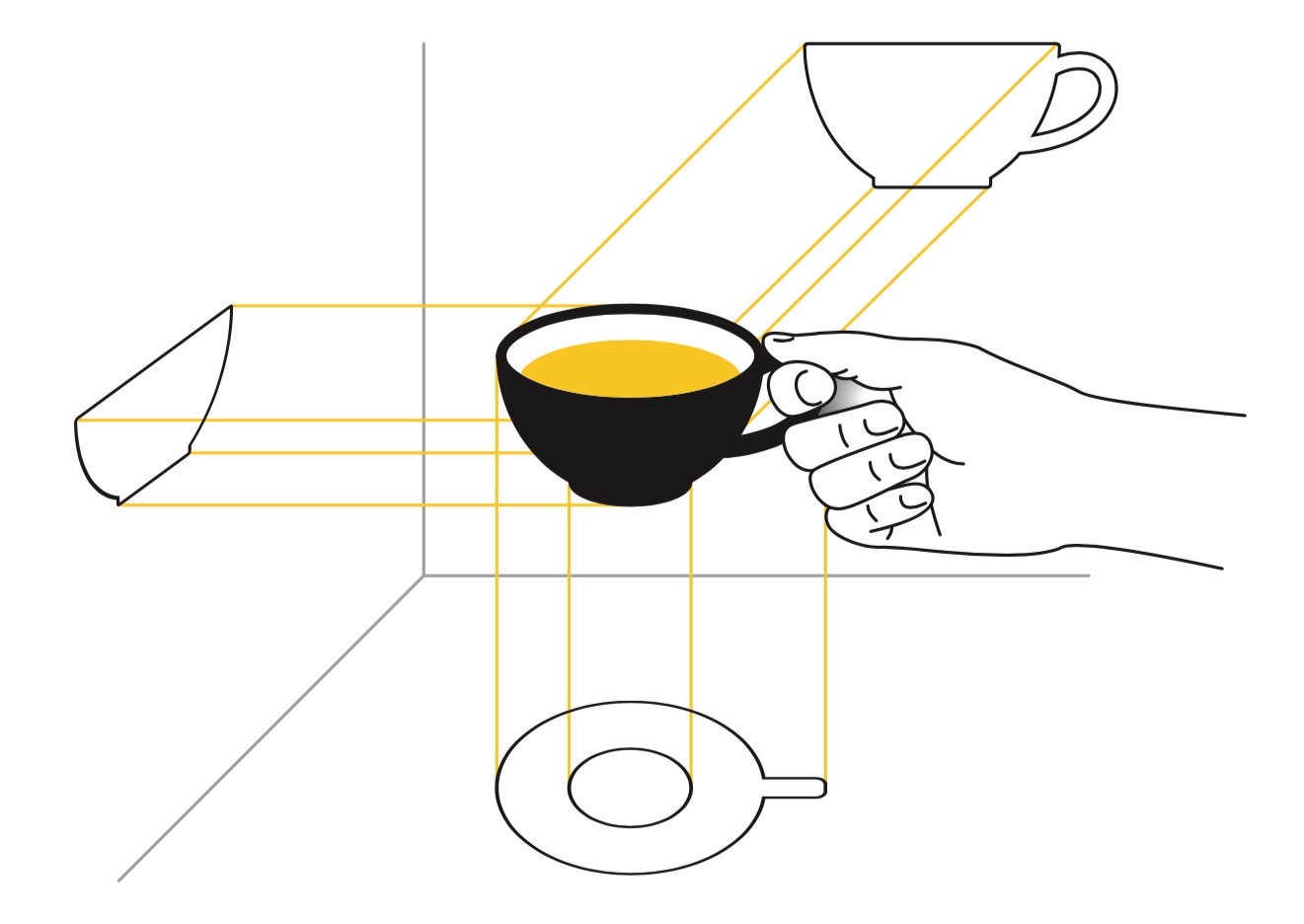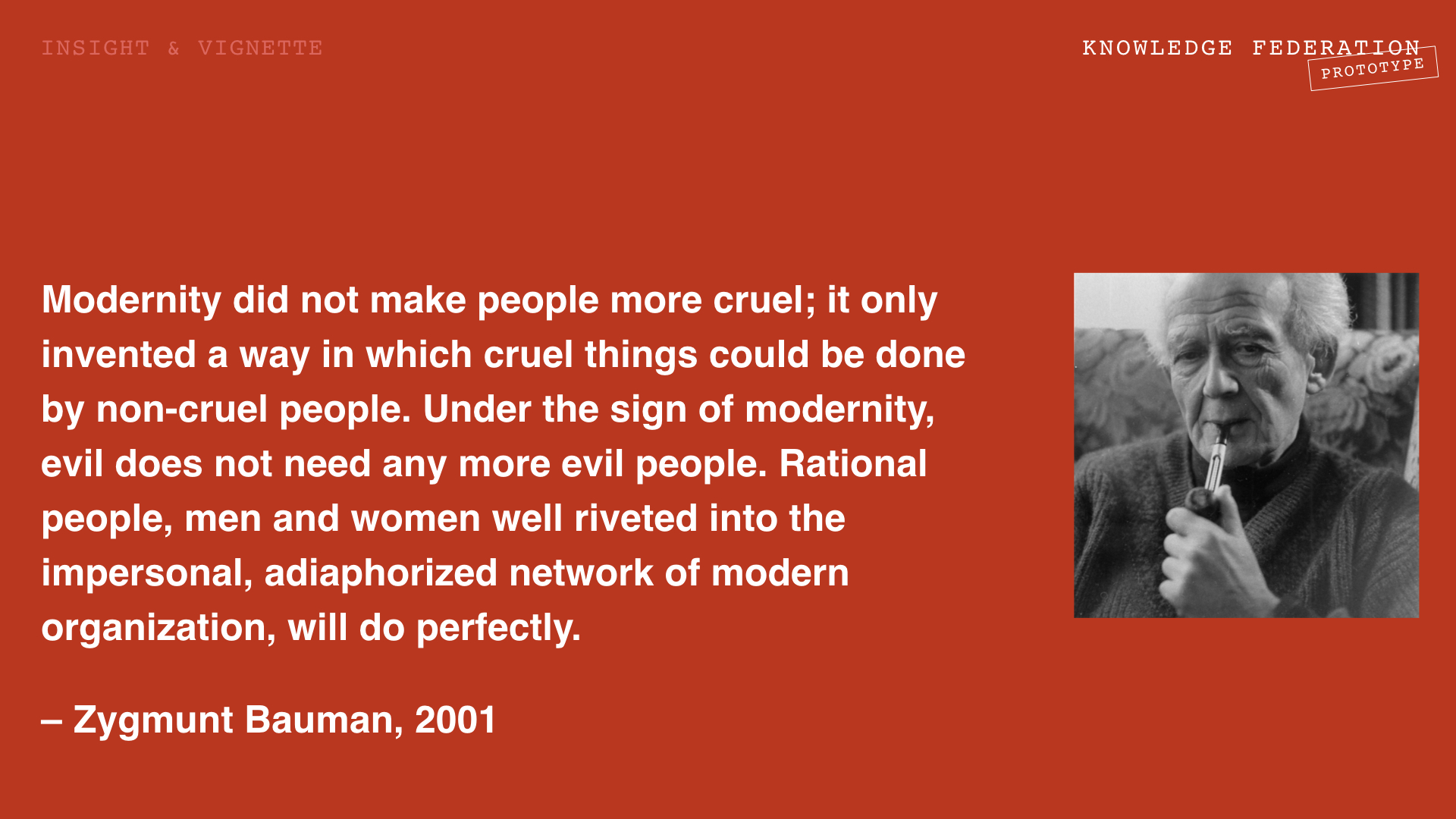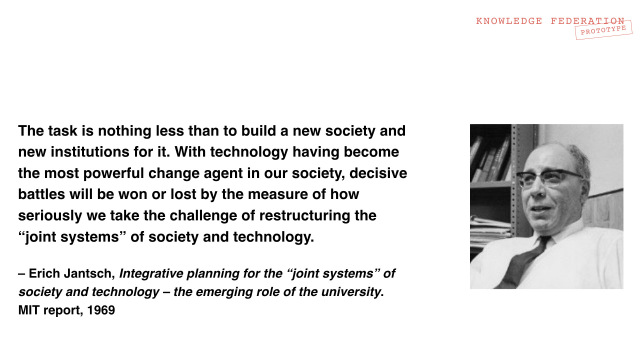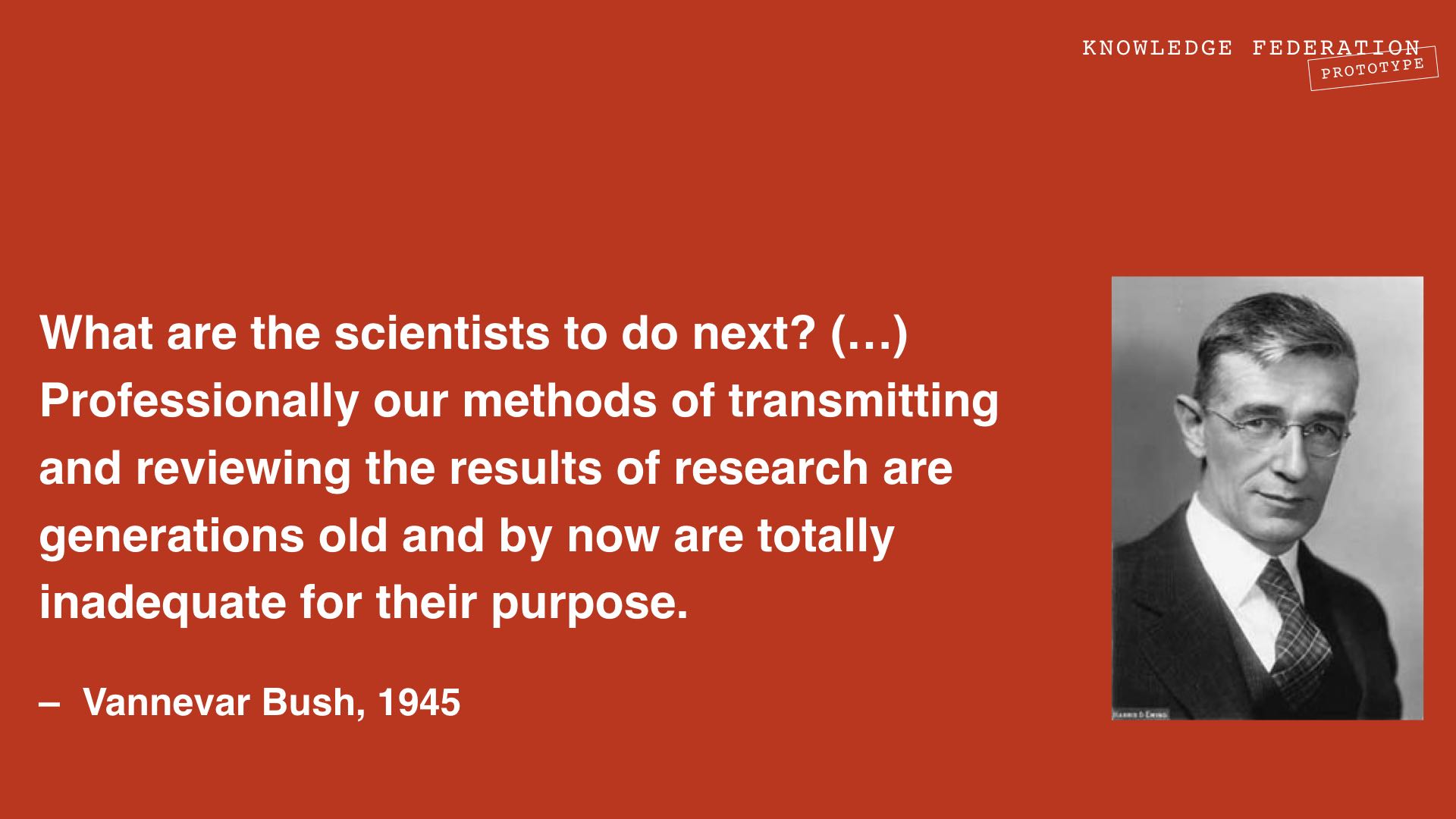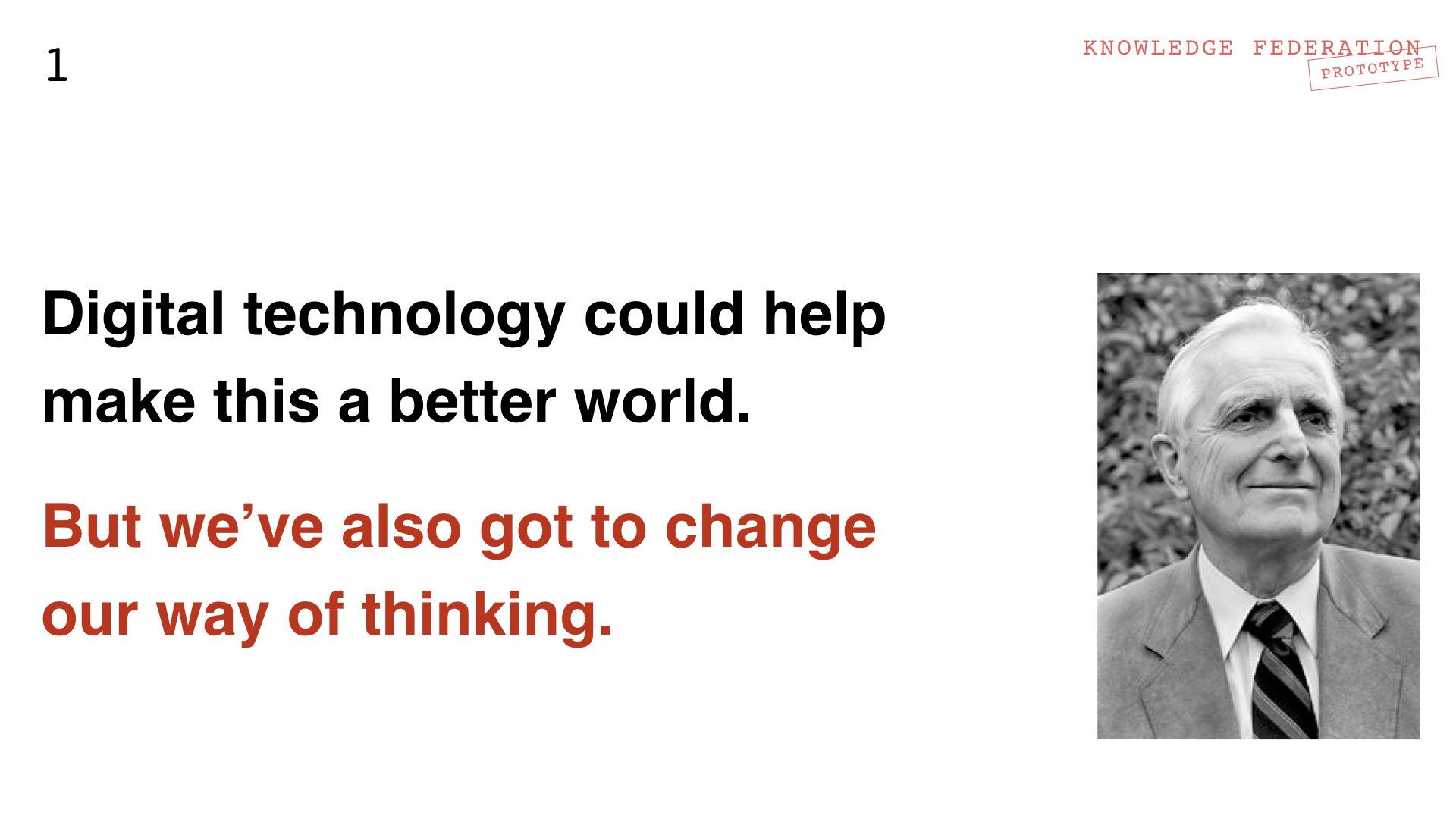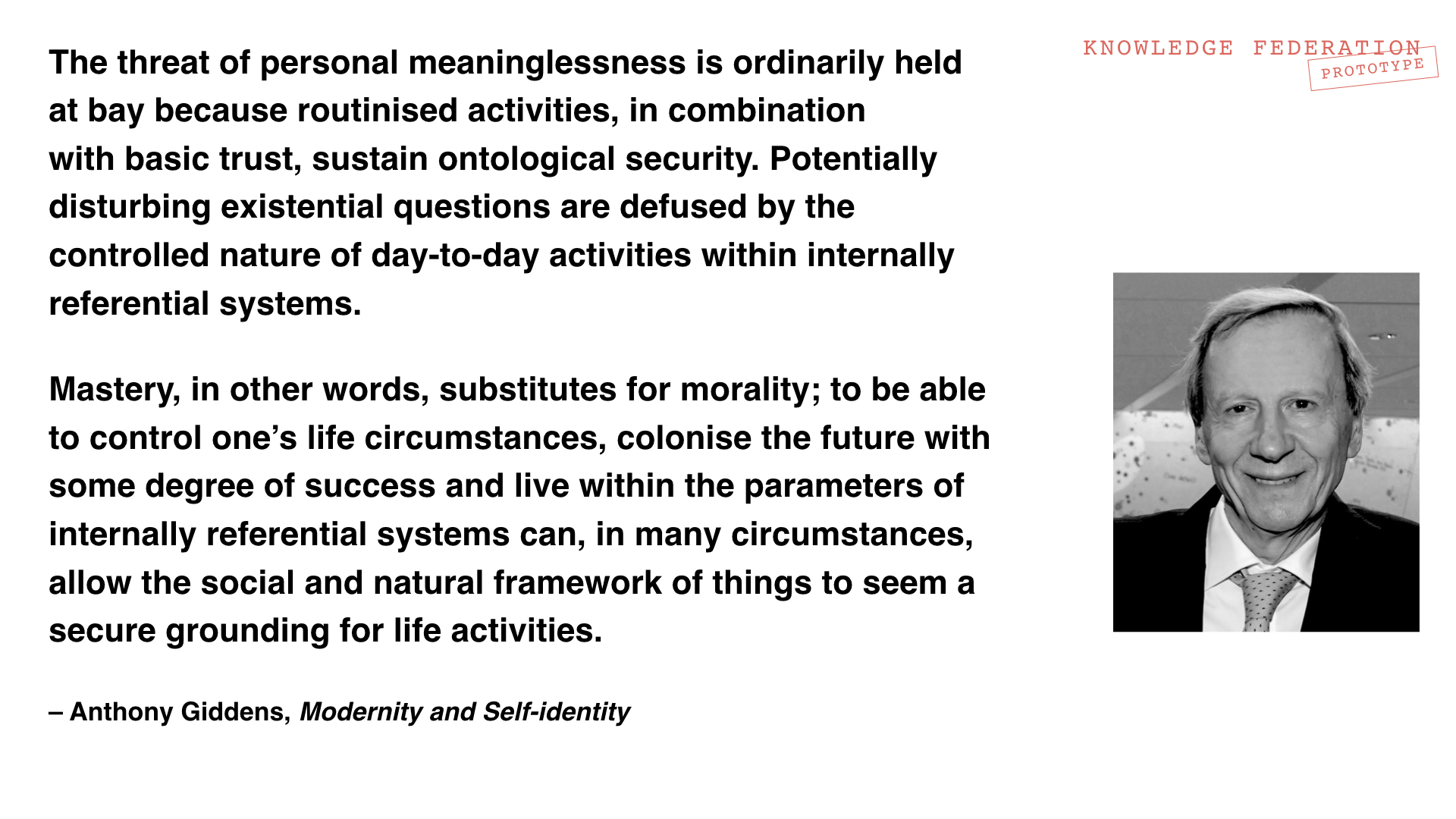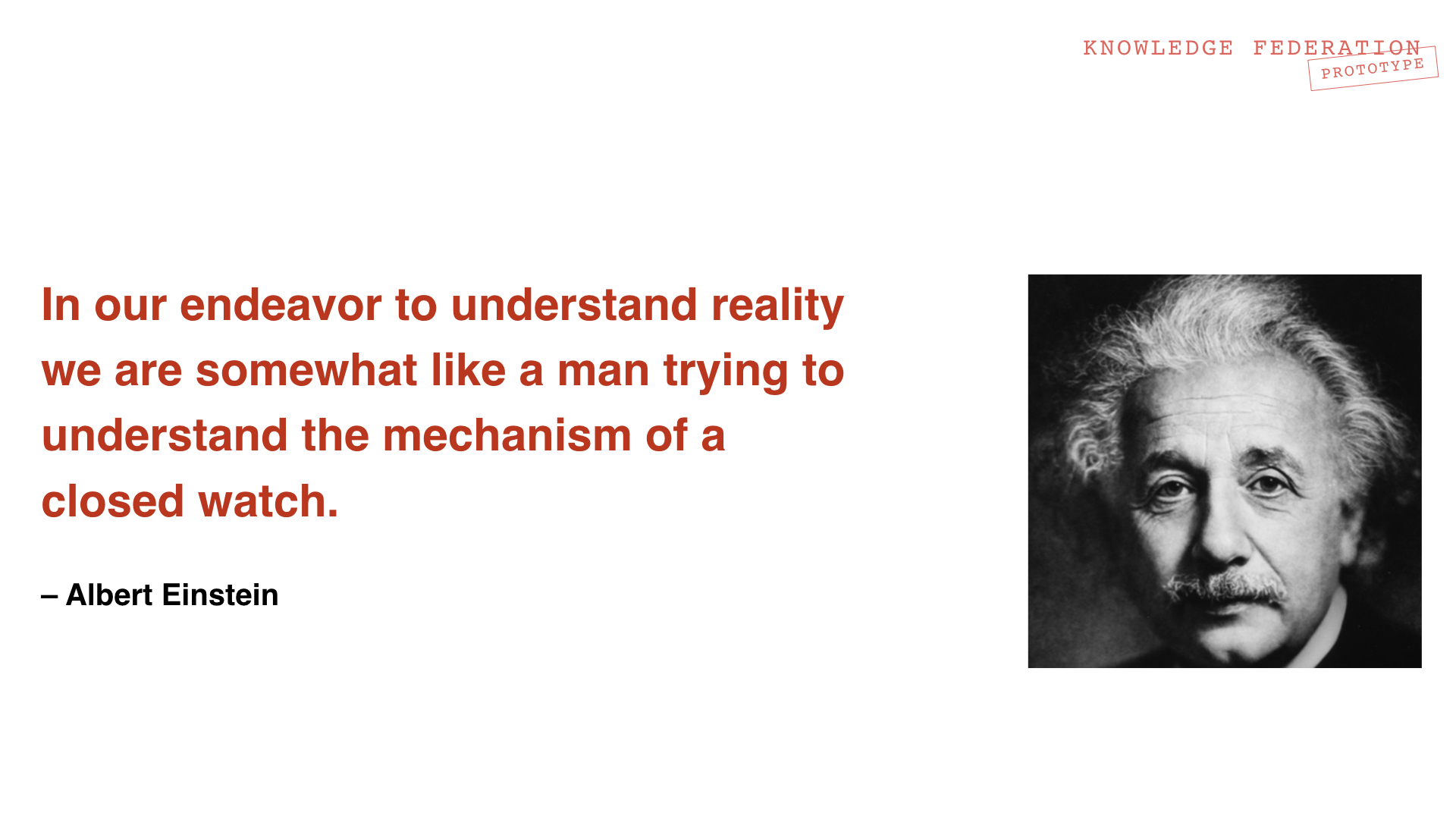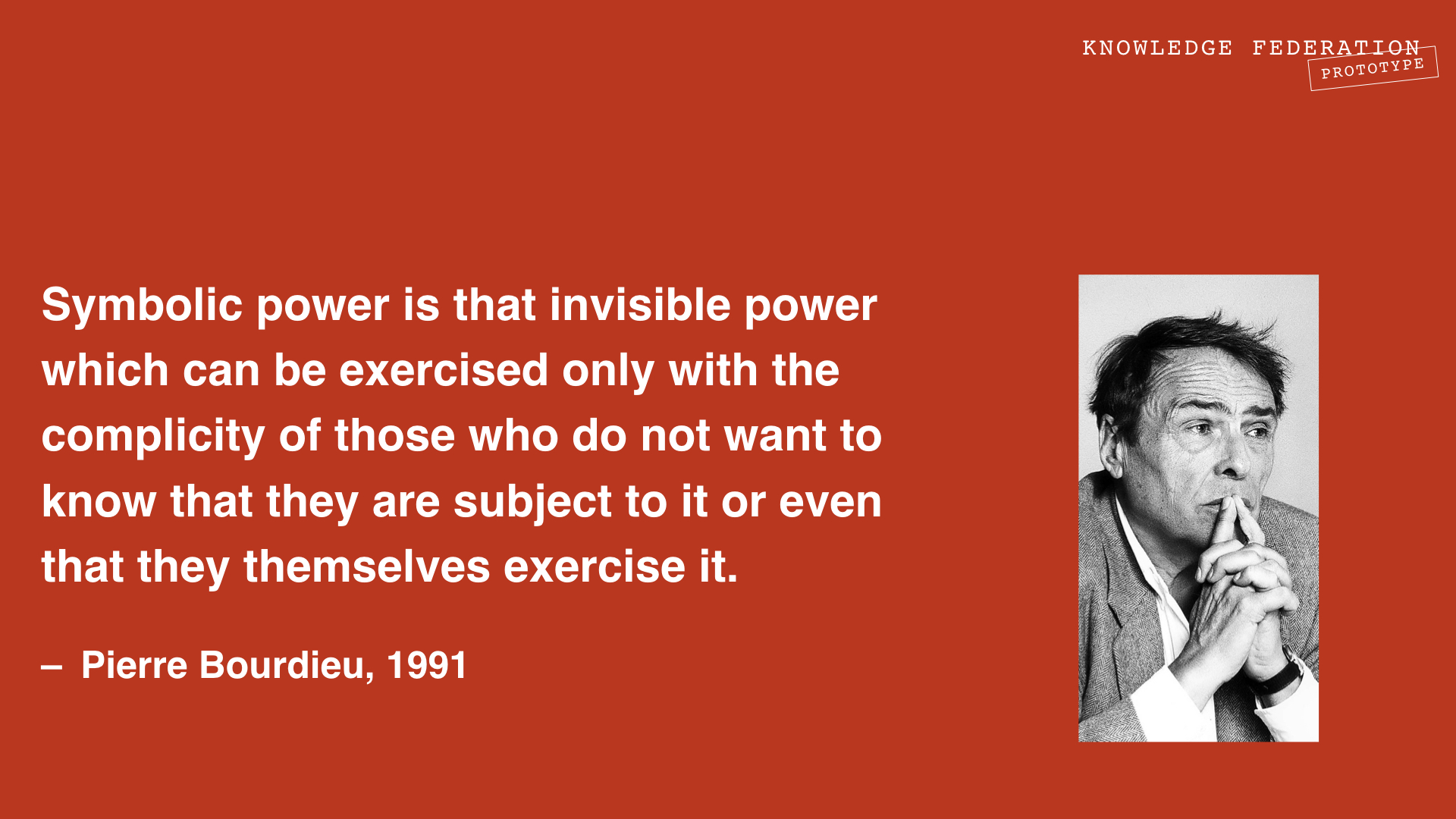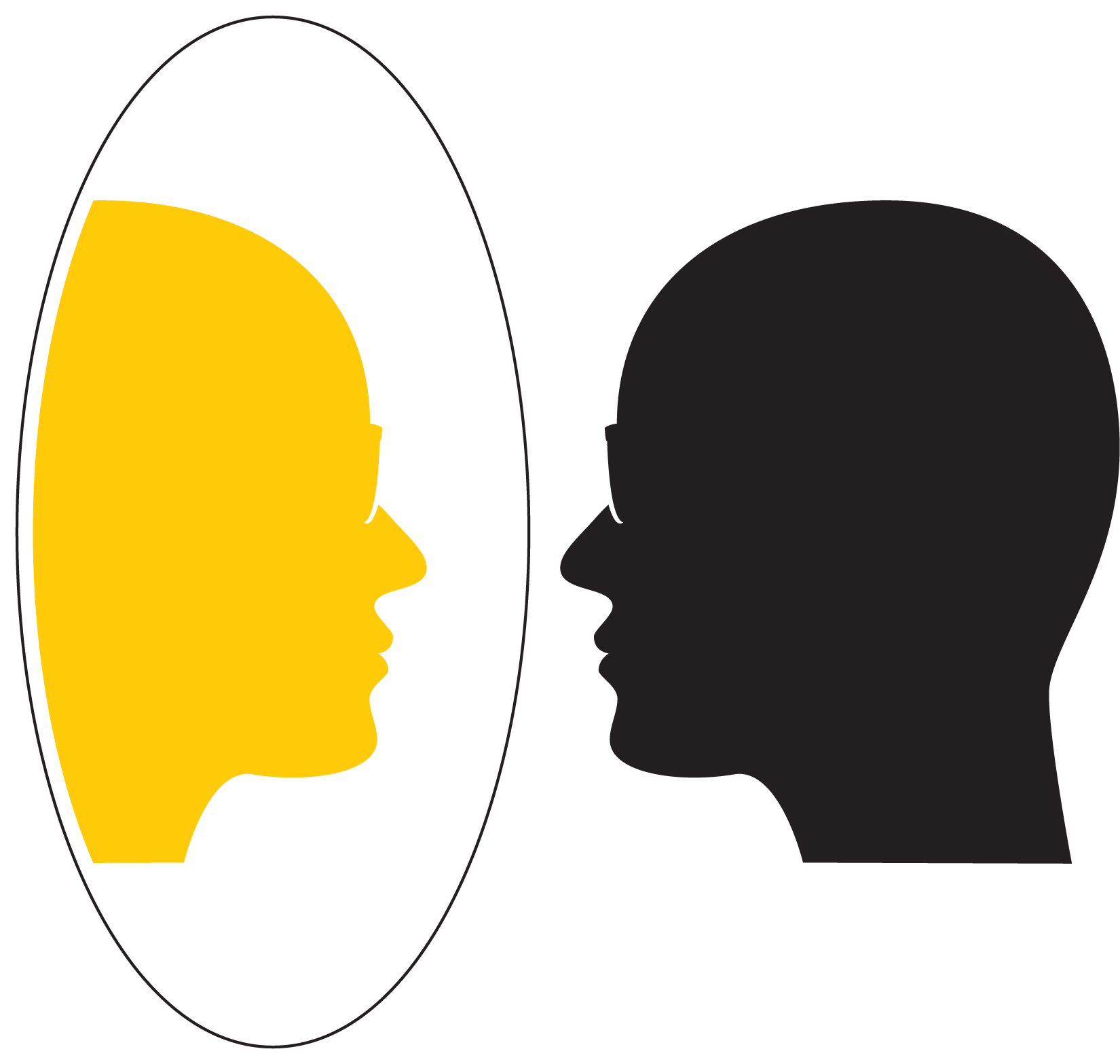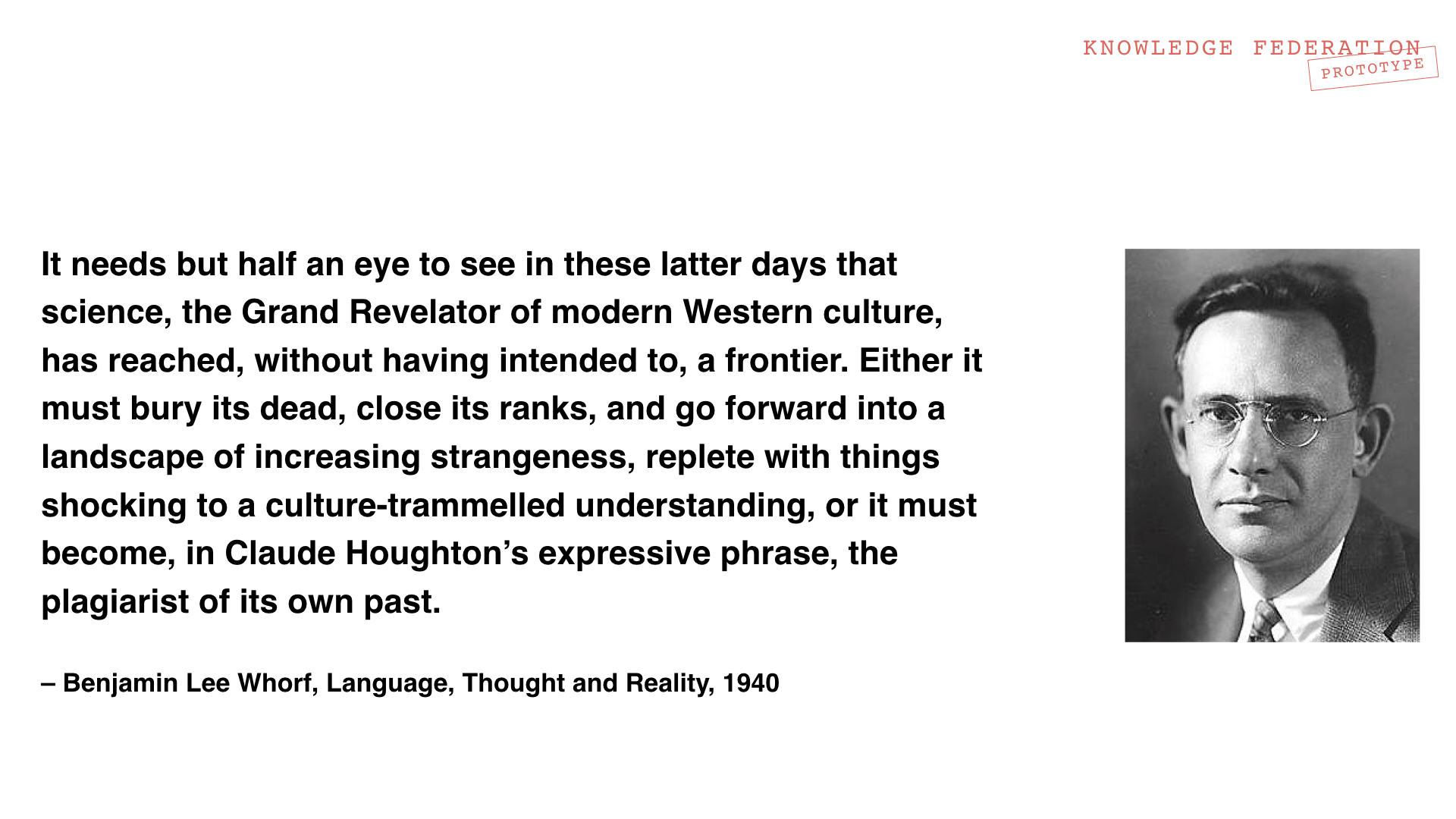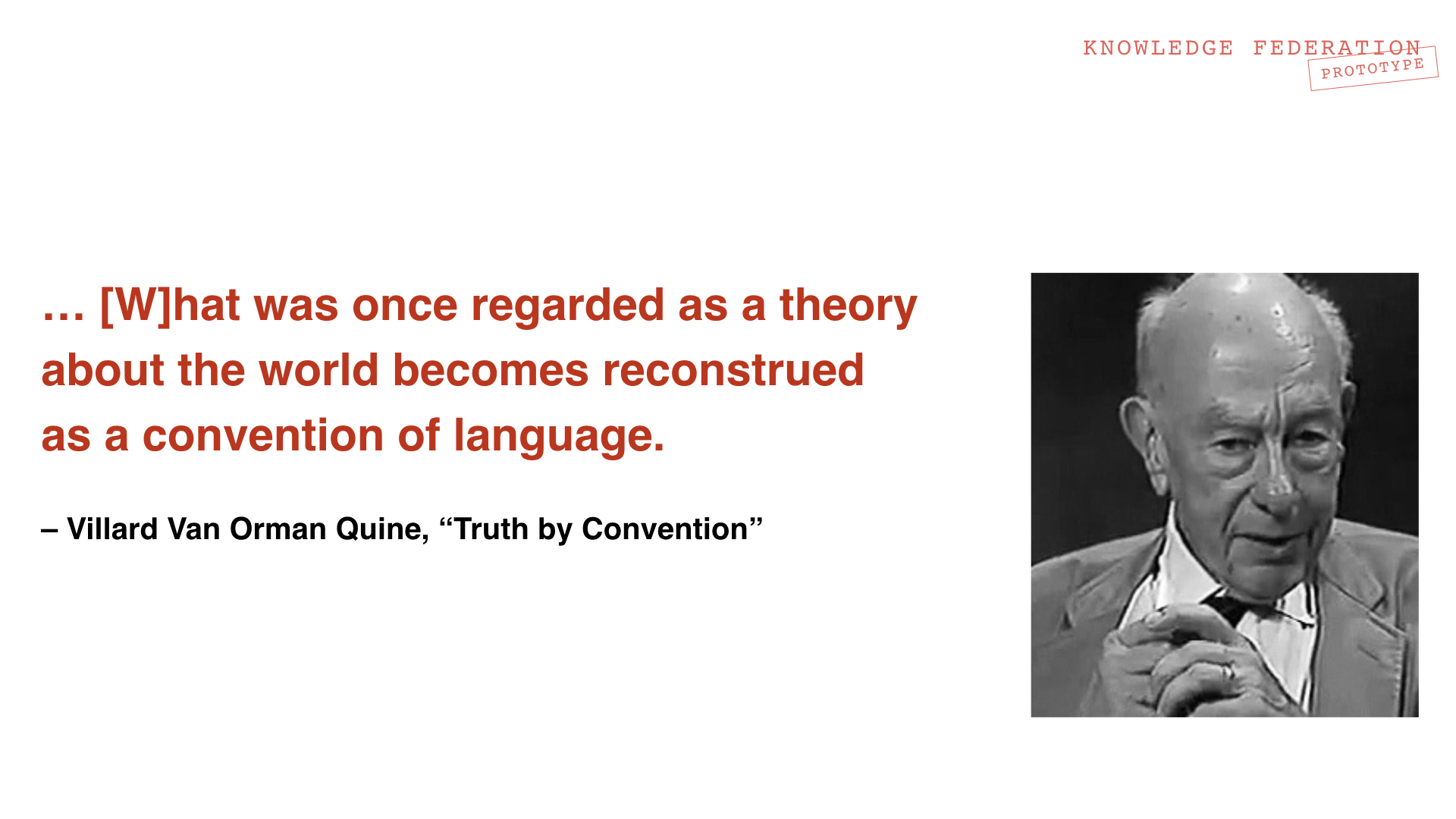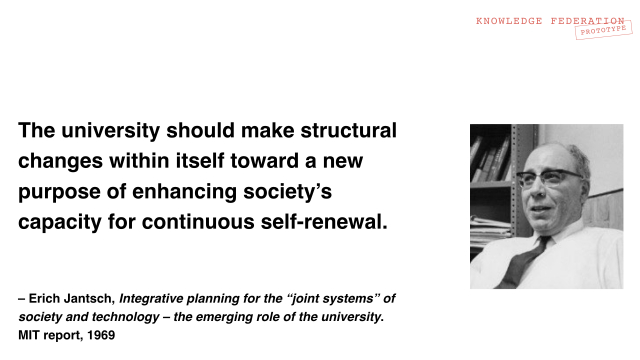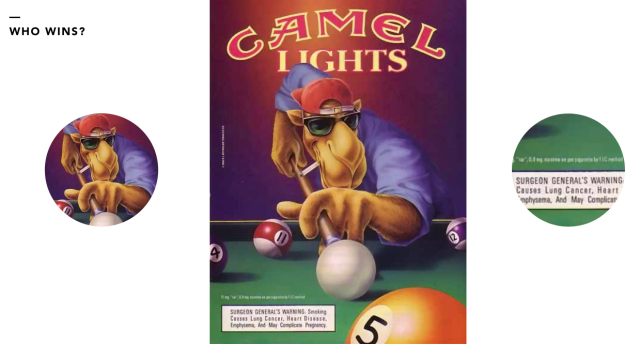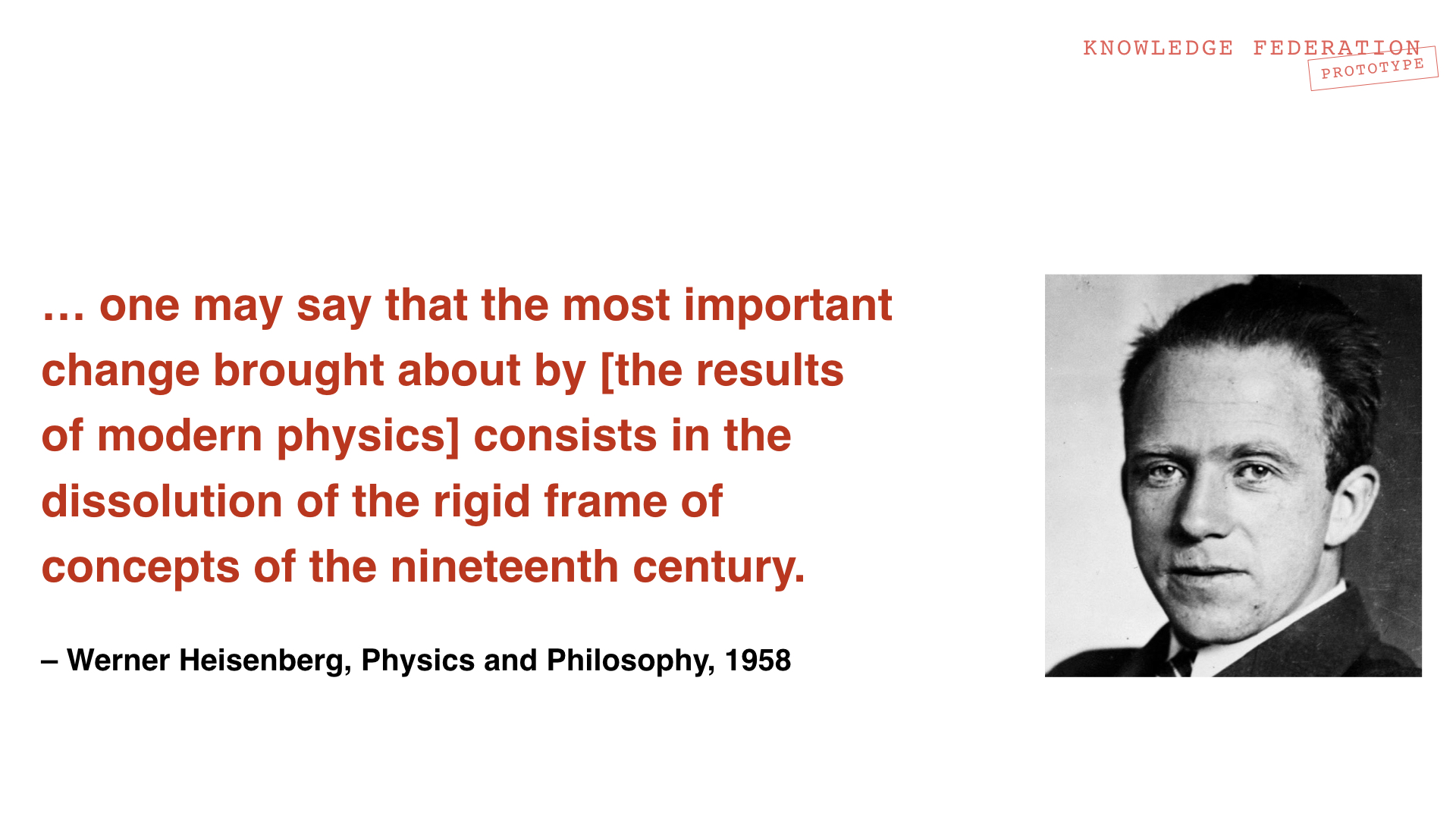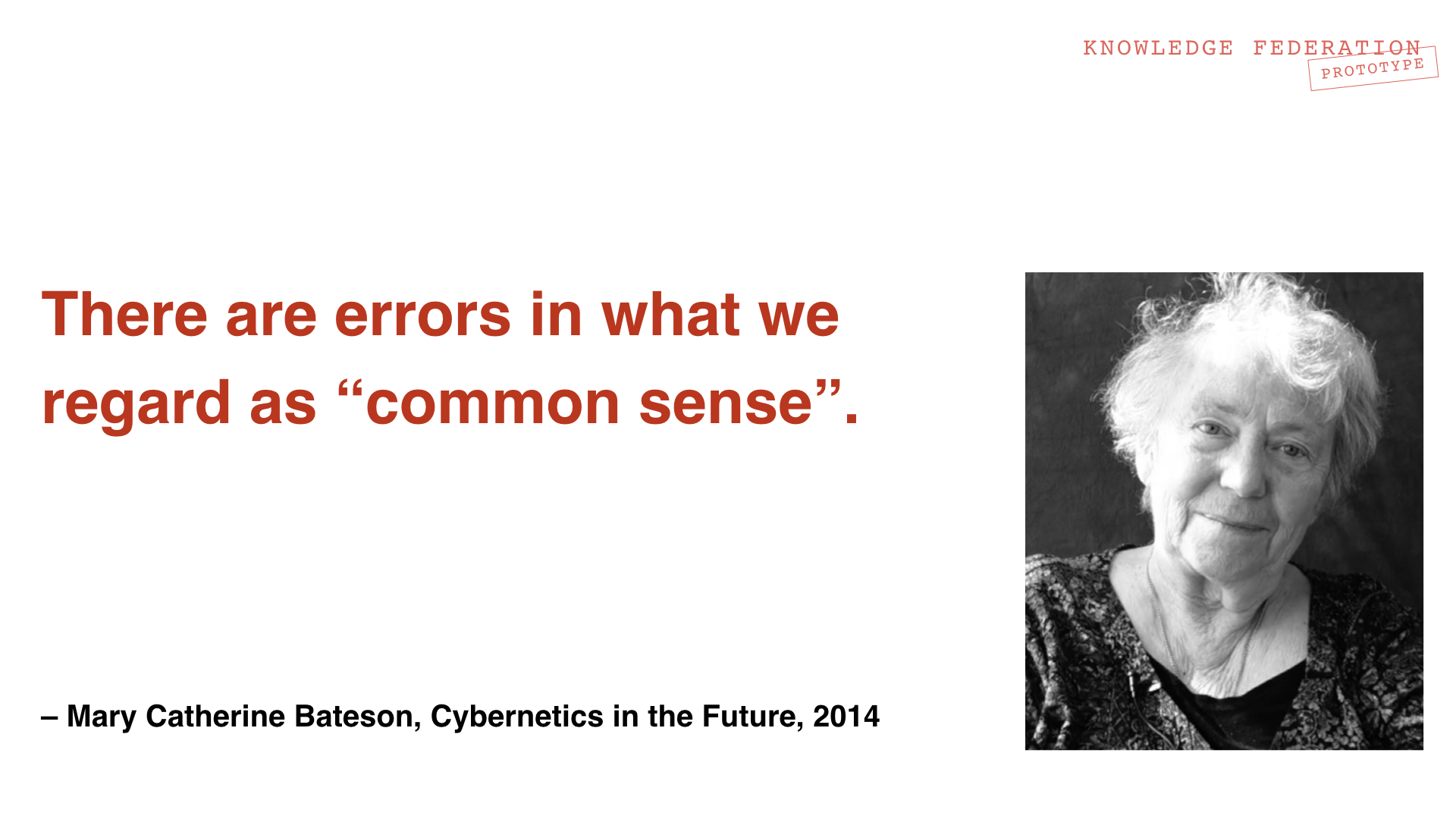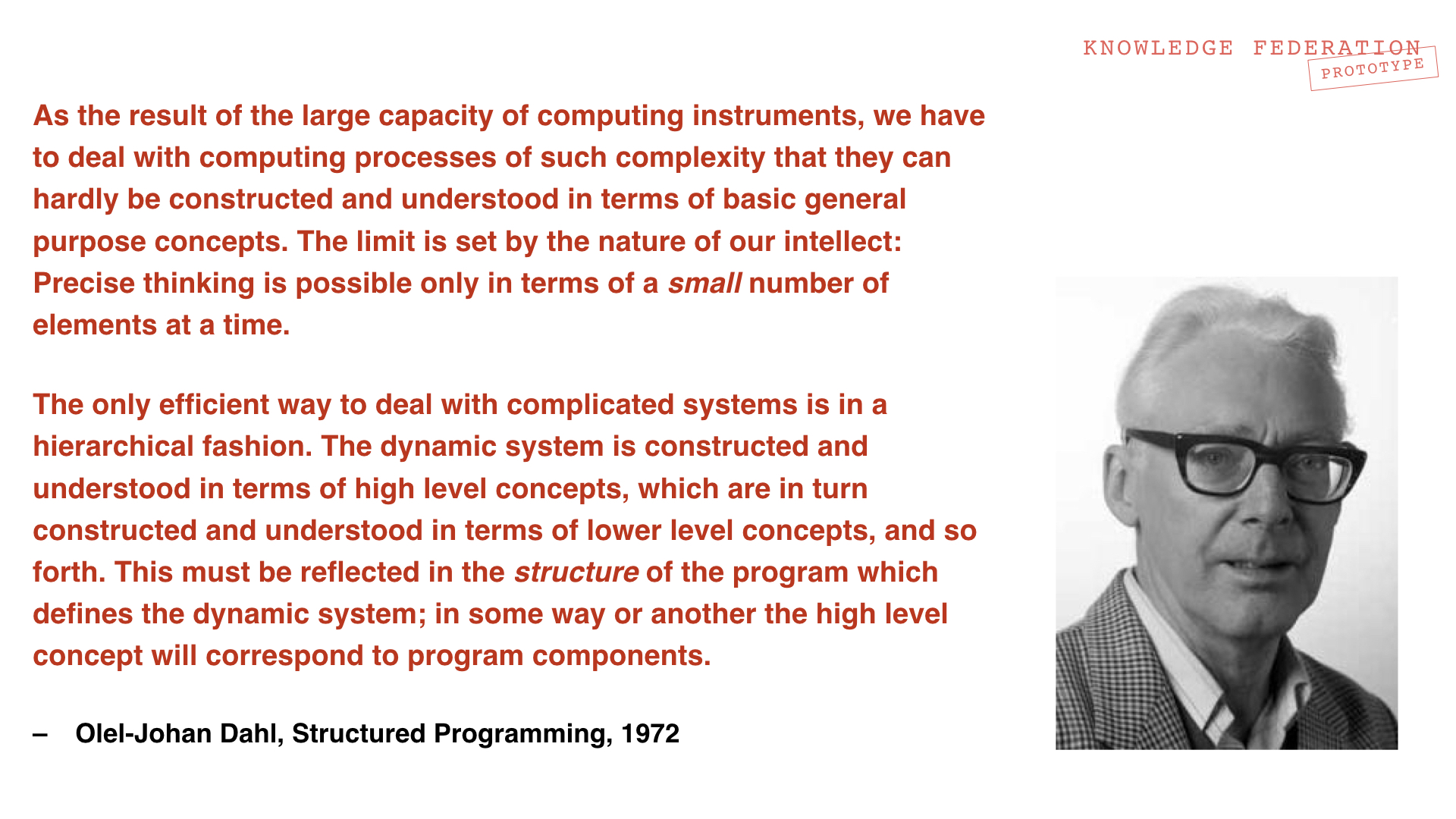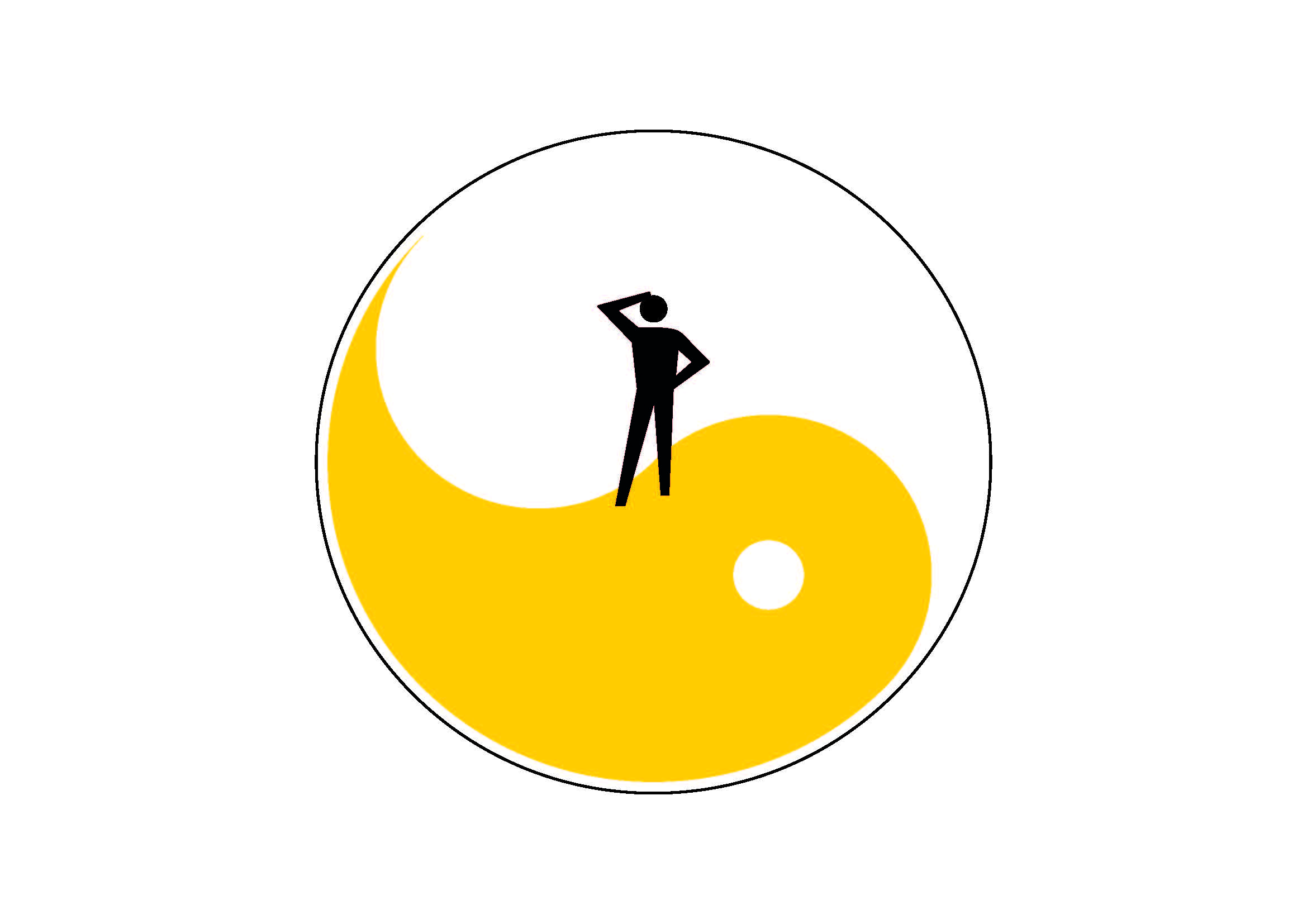Holotopia
Contents
- 1 HOLOTOPIA
- 1.1 An Actionable Strategy
- 1.2 Imagine...
- 1.3 Our proposal
- 1.4 A proof of concept application
- 1.5 A vision
- 1.6 A principle
- 1.7 A method
- 1.8 Five insights
- 1.9 Scope
- 1.10 Power structure
- 1.11 Collective mind
- 1.12 Socialized reality
- 1.13 Narrow frame
- 1.14 Convenience paradox
- 1.15 Summary and conclusions
- 1.16 A strategy
- 1.17 We will not solve our problems
HOLOTOPIA
An Actionable Strategy
Imagine...
You are about to board a bus for a long night ride, when you notice the flickering streaks of light emanating from two wax candles, placed where the headlights of the bus are expected to be. Candles? As headlights?
Of course, the idea of candles as headlights is absurd. So why propose it?
Because on a much larger scale this absurdity has become reality.
The Modernity ideogram renders the essence of our contemporary situation by depicting our society as an accelerating bus without a steering wheel, and the way we look at the world, try to comprehend and handle it as guided by a pair of candle headlights.
Our proposal
The core of our knowledge federation proposal is to change the relationship we have with information.
What is our relationship with information presently like?
Here is how Neil Postman described it:
"The tie between information and action has been severed. Information is now a commodity that can be bought and sold, or used as a form of entertainment, or worn like a garment to enhance one's status. It comes indiscriminately, directed at no one in particular, disconnected from usefulness; we are glutted with information, drowning in information, have no control over it, don't know what to do with it."
What would information and our handling of information be like, if we treated them as we treat other human-made things—if we adapted them to the purposes that need to be served?
By what methods, what social processes, and by whom would information be created? What new information formats would emerge, and supplement or replace the traditional books and articles? How would information technology be adapted and applied? What would public informing be like? And academic communication, and education?
The substance of our proposal is a complete prototype of knowledge federation, where initial answers to relevant questions are proposed, and in part implemented in practice.
Our call to action is to institutionalize and develop knowledge federation as an academic field, and a real-life praxis (informed practice).
Our purpose is to restore agency to information, and power to knowledge.
All elements in our proposal are deliberately left unfinished, rendered as a collection of prototypes. Think of them as composing a 'cardboard model of a city', and a 'construction site'. By sharing them we are not making a case for a specific 'city'—but for 'architecture' as an academic field, and a real-life praxis.
A proof of concept application
The Club of Rome's assessment of the situation we are in, provided us with a benchmark challenge for putting the proposed ideas to a test.
Four decades ago—based on a decade of this global think tank's research into the future prospects of mankind, in a book titled "One Hundred Pages for the Future"—Aurelio Peccei issued the following call to action:
"It is absolutely essential to find a way to change course."
Peccei also specified what needed to be done to "change course":
"The future will either be an inspired product of a great cultural revival, or there will be no future."
This conclusion, that we are in a state of crisis that has cultural roots and must be handled accordingly, Peccei shared with a number of twentieth century thinkers. Arne Næss, Norway's esteemed philosopher, reached it on different grounds, and called it "deep ecology".
In "Human Quality", Peccei explained his call to action:
"Let me recapitulate what seems to me the crucial question at this point of the human venture. Man has acquired such decisive power that his future depends essentially on how he will use it. However, the business of human life has become so complicated that he is culturally unprepared even to understand his new position clearly. As a consequence, his current predicament is not only worsening but, with the accelerated tempo of events, may become decidedly catastrophic in a not too distant future. The downward trend of human fortunes can be countered and reversed only by the advent of a new humanism essentially based on and aiming at man’s cultural development, that is, a substantial improvement in human quality throughout the world."
The Club of Rome insisted that lasting solutions would not be found by focusing on specific problems, but by transforming the condition from which they all stem, which they called "problematique".
Is it really true that we must "change course"? While this question may seem compelling, our focus will be on a related practical task:
The purpose of the Holotopia project is to restore our ability to "change course".
The fact that we must be able to "change course", when the circumstances demand that, can hardly be disputed. The fact that now, forty years later, The Club of Rome's call to action is still ignored and not even disputed—shows that there is some urgent work that needs to be done.
A vision
We begin by providing a guiding vision.
Holotopia is a vision of a possible future that emerges when proper 'light' has been 'turned on'.
Since Thomas More coined this term and described the first utopia, a number of visions of an ideal but non-existing social and cultural order of things have been proposed. In view of adverse and contrasting realities, the word "utopia" acquired the negative meaning of an unrealizable fancy.
As the optimism regarding our future waned, apocalyptic or "dystopian" visions became common. The "protopias" emerged as a compromise, where the focus is on smaller but practically realizable improvements.
The holotopia is different in spirit from them all. It is a more attractive vision of the future than what the common utopias offered—whose authors either lacked the information to see what was possible, or lived in the times when the resources we have did not yet exist. And yet the holotopia is readily attainable—because we already have the information and other resources that are needed for its fulfillment.
The holotopia vision is made concrete in terms of five insights, as explained below.
A principle
What do we need to do to "change course" toward holotopia?
The five insights point to a simple principle or rule of thumb—making things whole.
This principle is suggested by the holotopia's very name. And also by the Modernity ideogram. Instead of reifying our institutions and professions, and merely acting in them competitively to improve "our own" situation or condition, we consider ourselves and what we do as functional elements in a larger system of systems; and we self-organize, and act, as it may best suit the wholeness of it all.
Imagine if academic and other knowledge-workers collaborated to serve and develop planetary wholeness – what magnitude of benefits would result!
A method
"The arguments posed in the preceding pages", Peccei summarized in One Hundred Pages for the Future, "point out several things, of which one of the most important is that our generations seem to have lost the sense of the whole."
To be able to make things whole—we must be able to see things whole!
To highlight that the knowledge federation methodology described and implemented in the proposed prototype affords that very capability, to see things whole, in the context of the holotopia we refer to it by the pseudonym holoscope.
While the characteristics of the holoscope—the design choices or design patterns, how they follow from published insights and why they are necessary for 'illuminating the way'—will become obvious in the course of this presentation, one of them must be made clear from the start.
To see things whole, we must look at all sides.
The holoscope distinguishes itself by allowing for multiple ways of looking at a theme or issue, which are called scopes. The scopes and the resulting views have similar meaning and role as projections do in technical drawing. The views that show the entire whole from a certain angle are called aspects.
This modernization of our handling of information—distinguished by purposeful, free and informed creation of the ways in which we look at a theme or issue—has become necessary in our situation, suggests the bus with candle headlights. But it also presents a challenge to the reader—to bear in mind that the resulting views are not "reality pictures", contending for that status with one other and with our conventional ones.
In the holoscope, the legitimacy and the peaceful coexistence of multiple ways to look at a theme is axiomatic.
To liberate our worldview from the inherited concepts and methods and allow for deliberate choice of scopes, we used the scientific method as venture point—and modified it by taking recourse to insights reached in 20th century science and philosophy.
Science gave us new ways to look at the world: The telescope and the microscope enabled us to see the things that are too distant or too small to be seen by the naked eye, and our vision expanded beyond bounds. But science had the tendency to keep us focused on things that were either too distant or too small to be relevant—compared to all those large things or issues nearby, which now demand our attention. The holoscope is conceived as a way to look at the world that helps us see any chosen thing or theme as a whole—from all sides; and in proportion.
A way of looking or scope—which reveals a structural problem, and helps us reach a correct assessment of an object of study or situation—is a new kind of result that is made possible by (the general-purpose science that is modeled by) the holoscope.
We will continue to use the conventional way of speaking and say that something is as stated, that X is Y—although it would be more accurate to say that X can or needs to be perceived (also) as Y. The views we offer are accompanied by an invitation to genuinely try to look at the theme at hand in a certain specific way (to use the offered scopes); and to do that collaboratively, in a dialog.
Five insights
Scope
What is wrong with our present "course"? In what ways does it need to be changed? What benefits will result?
We apply the holoscope and illuminate five pivotal themes, which determine the "course":
- Innovation—the way we use our ability to create, and induce change
- Communication—the social process, enabled by technology, by which information is handled
- Epistemology—the fundamental assumptions we use to create truth and meaning; or "the relationship we have with information"
- Method—the way in which truth and meaning are constructed in everyday life, or "the way we look at the world, try to comprehend and handle it"
- Values—the way we "pursue happiness", which in the modern society directly determines the course
In each case, we see a structural defect, which led to perceived problems. We demonstrate practical ways, partly implemented as prototypes, in which those structural defects can be remedied. We see that their removal naturally leads to improvements that are well beyond the elimination of problems.
The holotopia vision results.
In the spirit of the holoscope, we here only summarize the five insights—and provide evidence and details separately.
Scope
What might constitute "a way to change course"?
"Man has acquired such decisive power that his future depends essentially on how he will use it", observed Peccei. Imagine if some malevolent entity, perhaps an insane dictator, took control over that power!
The power structure insight is that no dictator is needed.
While the nature of the power structure will become clear as we go along, imagine it, to begin with, as our institutions; or more accurately, as the systems in which we live and work (which we simply call systems).
Notice that systems have an immense power—over us, because we have to adapt to them to be able to live and work; and over our environment, because by organizing us and using us in certain specific ways, they decide what the effects of our work will be.
The power structure determines whether the effects of our efforts will be problems, or solutions.
Diagnosis
How suitable are the systems in which we live and work for their all-important role?
Evidence shows that the power structure wastes a lion's share of our resources. And that it either causes problems, or make us incapable of solving them.
The root cause of this malady is in the way systems evolve.
Survival of the fittest favors the systems that are predatory, not those that are useful.
This excerpt from Joel Bakan's documentary "The Corporation" (which Bakan as a law professor created to federate an insight he considered essential) explains how the most powerful institution on our planet evolved to be a perfect "externalizing machine" ("externalizing" means maximizing profits by letting someone else bear the costs, notably the people and the environment), just as the shark evolved to be a perfect predator. This scene from Sidney Pollack's 1969 film "They Shoot Horses, Don't They?" will illustrate how the power structure affects our own condition.
The systems provide an ecology, which in the long run shapes our values and "human quality". They have the power to socialize us in ways that suit their needs. "The business of business is business"; if our business is to succeed in competition, we must act in ways that lead to that effect. Whether we bend and comply, or get replaced—will from the point of view of the system make no difference.
A consequence, Zygmunt Bauman diagnosed, is that bad intentions are no longer needed for bad things to happen. Through socialization, the power structure can co-opt our duty and commitment, and even heroism and honor.
Bauman's insight that even the holocaust was a consequence and a special case, however extreme, of the power structure, calls for careful contemplation: Even the concentration camp employees, Bauman argued, were only "doing their job"—in a system whose character and purpose was beyond their field of vision, and power to change.
While our ethical sense is tuned to the power structures of the past, we are committing (in all innocence, by acting only through power structures that bind us together) the greatest massive crime in history.
Our children may not have a livable planet to live on.
Not because someone broke the rules—but because we follow them.
Remedy
The fact that we will not solve our problems unless we develop the capability to update our systems has not remained unnoticed.
The very first step that the The Club of Rome's founders did after its inception, in 1968, was to convene a team of experts, in Bellagio, Italy, to develop a suitable methodology. They gave making things whole on the scale of socio-technical systems the name "systemic innovation"—and we adapted that as one of our keywords.
The work and the conclusions of this team were based on results in the systems sciences. In the year 2000, in "Guided Evolution of society", systems scientist Béla H. Bánáthy surveyed relevant research, and concluded in a true holotopian tone:
We are the first generation of our species that has the privilege, the opportunity and the burden of responsibility to engage in the process of our own evolution. We are indeed chosen people. We now have the knowledge available to us and we have the power of human and social potential that is required to initiate a new and historical social function: conscious evolution. But we can fulfill this function only if we develop evolutionary competence by evolutionary learning and acquire the will and determination to engage in conscious evolution. These two are core requirements, because what evolution did for us up to now we have to learn to do for ourselves by guiding our own evolution.
In 2010 Knowledge Federation began to self-organize to enable further progress on this vitally important frontier. The procedure we developed is simple: We create a prototype of a system, and a transdisciplinary community and project around it to update it continuously. The insights in participating disciplines can in this way have real or systemic effects.
Our very first prototype, the Barcelona Innovation Ecosystem for Good Journalism in 2011, was of a public informing that identifies systemic causes and proposes corresponding solutions (by involving academic and other experts) of perceived problems (reported by people directly, through citizen journalism).
A year later we created The Game-Changing Game as a generic way to change systems—and hence as a "practical way to craft the future"; and based on it The Club of Zagreb, as an update to The Club of Rome.
Each of about forty prototypes in our portfolio illustrates systemic innovation in a specific domain. Each of them is composed in terms of design patterns—problem-solution pairs, ready to be adapted for other applications and domains.
The Collaborology prototype, in education, will highlight some of the advantages of this approach.
An education that prepares us only for traditional professions, once in a lifetime, is an obvious obstacle to systemic change. Collaborology implements an education that is in every sense flexible (self-guided, life-long...), and in an emerging area of interest (collaborative knowledge work, as enabled by new technology). By being collaboratively created itself (Collaborology is created and taught by a network of international experts, and offered to learners world-wide), the economies of scale result that dramatically reduce effort. This in addition provides a sustainable business model for developing and disseminating up-to-date knowledge in any domain of interest. By conceiving the course as a design project, where everyone collaborates on co-creating the learning resources, the students get a chance to exercise their "human quality". This in addition gives the students an essential role in the resulting 'knowledge-work ecosystem' (as 'bacteria', extracting 'nutrients') .
Scope
We have just seen that our key evolutionary task is to make institutions whole.
Where—with what institution or system—shall we begin?
The handling of information, or metaphorically our society's 'headlights', suggests itself as the answer for several reasons.
One of them is obvious: If information and not competition will be our guide, then our information will need to be different.
In his 1948 seminal "Cybernetics", Norbert Wiener pointed to another reason: In social systems, communication—which turns a collection of independent individual into a coherently functioning entity— is in effect the system. It is the communication system that determines how the system as a whole will behave. Wiener made that point by talking about the colonies of ants and bees. Cybernetics has shown—as its main point, and title theme—that "the tie between information and action" has an all-important role, which determines (Wiener used the technical keyword "homeostasis", but let us here use this more contemporary one) the system's sustainability. The full title of Wiener's book was "Cybernetics or Control and Communication in the Animal and the Machine". To be able to correct their behavior and maintain inner and outer balance, to be able to "change course" when the circumstances demand that, to be able to continue living and adapting and evolving—a system must have suitable communication-and-control.
Diagnosis
Presently, our core systems, and with our civilization as a whole, do not have that.
The tie between information and action has been severed, Wiener too observed.
Our society's communication-and-control is broken; it needs to be restored.
To make that point, Wiener cited an earlier work, Vannevar Bush's 1945 article "As We May Think", where Bush diagnosed that the tie between scientific information, and public awareness and policy, had been broken. Bush urged the scientists to make the task of revising their communication their next highest priority—the World War Two having just been won.
These calls to action remained without effect.
"As long as a paradox is treated as a problem, it can never be dissolved," observed David Bohm. Wiener too entrusted his insight to the communication whose tie with action had been severed. We have assembled a collection of examples of similarly important academic results that shared a similar fate—to illustrate a general phenomenon we called the Wiener's paradox.
As long as the link between communication and action is broken—the academic results that challenge the present "course" or point to a new one will tend to be ignored!
To an academic researcher, it may feel disheartening to see that so many best ideas of our best minds have been ignored.
This sentiment is, however, transformed to holotopian optimism, as soon we see 'the other side of the coin'—the vast creative frontier that is opening up. We are invited to, we are indeed obliged to reinvent the systems in which we live and work, and our own, academic system to begin with—by reconfiguring the communication that holds them together, and enables them to interoperate.
And optimism will turn into enthusiasm, when we consider also this widely ignored fact:
The core elements of the information technology we now use to communicate were created to enable a paradigm change on that frontier.
The 'lightbulb' has already been created—for the purpose of giving our society the right kind of 'headlights'.
But it has not yet been put to use!
Vannevar Bush pointed to the need for this new paradigm already in his title, "As We May Think". His point was that "thinking" means making associations or "connecting the dots". And that given our vast volumes of information—technology and processes must be devised to enable us to "connect the dots" or think together, as a single mind does. He described a prototype system called "memex", based on microfilm as technology.
Douglas Engelbart took Bush's idea in a whole new direction—by observing (in 1951!) that when each of us humans are connected to a personal digital device through an interactive interface, and when those devices are connected together into a network—then the overall result is that we are connected together as the cells in a human organism are connected by the nervous system.
All earlier innovations in this area—from the clay tablets to the printing press—required that a physical medium with the message be transported.
This new technology allows us to "create, integrate and apply knowledge" concurrently, as cells in the human organism do.
We can develop insights and solutions together.
We can become "collectively intelligent".
Engelbart conceived this new technology as a key step toward enabling us (or more precisely our systems) to tackle the "complexity times urgency" of our problems, which he saw as growing at an accelerated rate.
But this, Engelbart observed, requires "new thinking": It requires that we use the technology to make our systems whole.
This three minute video clip, which we called "Doug Engelbart's Last Wish", will give us a chance to pause and reflect, and see what all this practically means. Think about the prospects of improving our institutional and civilizational collective minds. Imagine "the effects of getting 5% better", Engelbart commented with a smile. Then he put his fingers on his forehead and looked up: "I've always imagined that the potential was... large..." The improvement that is both necessary and possible is not just stupendously large; it is qualitative—from communication that doesn't work, and systems that don't work, to ones that do.
To Engelbart's dismay, our new "collective nervous system" ended up being used to do no better than make the old processes and systems more efficient. The ones that evolved through the centuries of use of the printing press. The ones that broadcast, and overwhelm us with information.
This observation by Anthony Giddens points to the effects that our dazzled and confused collective mind had on our culture; and on "human quality".
Our sense of meaning having been drowned in an overload of data, in a reality whose complexity is well beyond our comprehension—we have no other recourse but "ontological security". We find a sense of meaning in learning a profession, and performing in it a competitively.
But that is exactly what binds us to power structure!
Remedy
How can we restore the severed link between communication and action?
How can we change our collective mind—as our situation demands, and our technology enables?
Engelbart left us a simple and clear answer: Bootstrapping.
His point was that only writing about what needs to be done would not have the intended effect (the tie between information and action being broken). Bootstrapping means that we consider ourselves as parts in our systems; and that we self-organize, and act as it may best serve to restore them to wholeness.
Bootstrapping means that we either create new systems with the material of our own minds and bodies, or help others do that.
The Knowledge Federation transdiscipline was conceived by an act of bootstrapping, to enable bootstrapping.
What we are calling knowledge federation is an umbrella term for a variety of activities and social processes that together comprise a well-functioning collective mind. Their development and dissemination obviously requires a new body of knowledge, and a new institution.
The critical task is, however, to bootstrap—i.e. to self-organize so as to enable the state of the art knowledge and technology to be woven directly into systems.
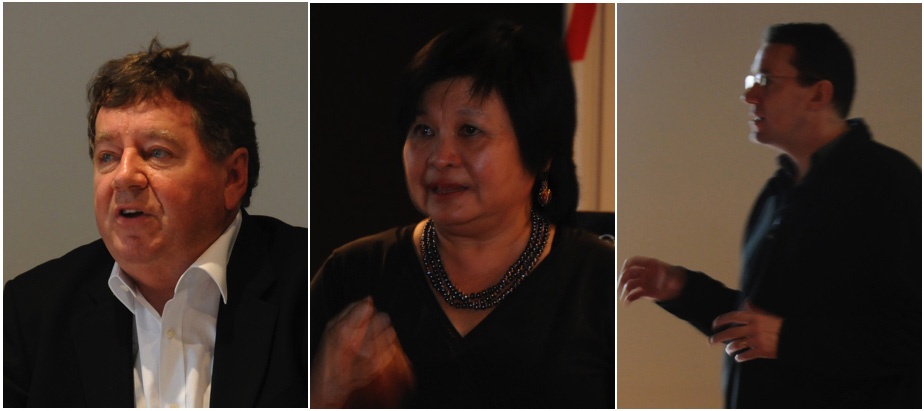
Paddy Coulter, Mei Lin Fung and David Price speaking at our "An Innovation Ecosystem for Good Journalism" workshop in Barcelona
We use the above triplet of photos ideographically, to highlight that we are doing that.
In 2008, when Knowledge Federation had its inaugural meeting, two closely related initiatives were formed: Program for the Future (a Silicon Valley-based initiative to continue and complete "Doug Engelbart's unfinished revolution") and Global Sensemaking (an international community of researchers and developers, working on technology and processes for collective sense making). The featured participants of our 2011 workshop in Barcelona, where our public informing prototype was created, are Paddy Coulter (the Director of Oxford Global Media and Fellow of Green College Oxford, formerly the Director of Oxford University's Reuter Program in Journalism) Mei Lin Fung (the founder of Program for the Future) and David Price (who co-founded both the Global Sensemaking R & D community, and Debategraph—which is now the leading global platform for collective thinking).
Other prototypes contributed other design patterns for restoring the severed link between information and action. The Tesla and the Nature of Creativity TNC2015 prototype showed how to federate a research result that has general interest for the public, which is written in an academic vernacular (of quantum physics). The first phase of this prototype, where the author collaborated with our communication design team, turned the academic article into a multimedia object, with intuitive, metaphorical diagrams and explanatory interviews with the author. The second phase was a high-profile live streamed dialog, where the result was announced and discussed. The third phase was online collective thinking about the result, by using Debategraph.
The Lighthouse 2016 prototype is conceived as a direct remedy for the Wiener's paradox, created for and with the International Society for the Systems Sciences. This prototype models a system by which an academic community can federate an answer to a socially relevant question (combine their resources in making it reliable and clear, and communicate it to the public).
The question in this case was whether can rely on "free competition" to guide our systems; or whether the alternative—the information developed in the systems sciences—needs to be used.
Scope
"Act like as if you loved your children above all else",Greta Thunberg, representing her generation, told the political leaders at Davos. Of course political leaders love their children—don't we all? But Greta was asking them to 'hit the brakes'; and when the 'bus' they are believed to be 'driving' is inspected, it becomes clear that the 'brakes' too are dysfunctional.
The job of the politicians is to keep 'the bus on course' (the economy growing) for yet another four years. Changing the 'course' or the system is beyond what they are able to do, or even imagine doing.
The COVID-19 pandemic may require systemic changes now.
Who—what institution or system—will lead us through our unprecedentedly large creative challenges?
Both Erich Jantsch and Doug Engelbart believed that "the university" would have to be the answer; and they made their appeals accordingly. But the universities ignored them—just as they ignored Vannevar Bush and Norbert Wiener before them, and others who followed.
Why?
Isn't the prospect of restoring agency to information and power to knowledge deserving of academic attention?
It is tempting to conclude that the university institution followed the general trend, and evolved as a power structure. But to see solutions, we must look at deeper causes.
We find them in the very foundations on which our handling of information has been developed.
Or in other words, in the relationship we have with information.
Diagnosis
In the course of modernization, we made a fundamental error.
From the traditional culture we adopted a myth incomparably more disruptive of culture and its evolution than the creation myth—the belief that "truth" means "correspondence with reality"; and that the purpose of information, and of our pursuit of knowledge, is to "know the reality objectively", as it truly is.
This fundamental error was detected and reported, but not corrected. (We are once again witnessing that the link between information and action has been severed.) While we federated this all-important insight carefully, to be able to reach it, one only needs to read Einstein (who in our prototypes has the role of the icon of "modern science").
It is simply impossible, Einstein remarked (while writing about "Evolution of Physics" with Leopold Infeld), to open up the 'mechanism of nature' and verify that our ideas and models correspond to the real thing! We cannot indeed even conceive of such a comparison.
From the 20th century cognitive science and philosophy we learned to see the whole issue of "reality" in a completely different way:
"Reality" is not something we discover; it is something we construct.
This "social construction of reality" played an essential role in the very 'mechanism' of the tradition.
The socialized reality construction has served as the 'DNA', which enabled the traditional cultures to reproduce themselves and evolve.
Information has, in other words, always served as 'headlights'. The primary function of the traditional myths was not to serve as a "reality map"—but to found the principles and norms that oriented people's behavior.
It is by radically changing our conception of reality—while continuing to reify the result—that we became 'cultural shipwreckers'.
The consequences of continuing to use reification as foundation include:
- Reification of institutions. Our "science", "democracy", "public informing" and other institutions are all traditional—in the sense that they do not have explicitly stated purposes, against which their current implementations may be evaluated; they simply are their implementations. An error of perception resulted, which keeps us using 'candles' as 'headlights'.
- Severed link between information and action. The perceived purpose of information being to complete the 'reality puzzle'—every new "piece of information" appears to be just as relevant as any other; and also necessary for completing the 'puzzle'. In the sciences and in the media, enormous amounts of information are produced "disconnected from usefulness"—as Postman diagnosed.
- Stringent limits to creativity. A vast global army of selected, trained and publicly sponsored creative men and women are obliged to confine their creative action to observing the world—by looking at it through the methods and concepts of traditional disciplines.
- Loss of cultural heritage. To see it, join us on an imaginary visit to a cathedral: There is awe-inspiring architecture; Michelangelo's Pietà meets the eye, and his frescos are near by. Allegri's Miserere reaches us from above. And then there is the ritual. All this, and a lot more, comprises a human-made 'ecosystem' called "culture", in which "human quality" grows. In important respects, this 'ecosystem' resembles the biophysical one; but there is a difference: We have nothing equivalent to the temperature and the CO2 measurements, to be able to diagnose problems, and propose policies. Indeed, understanding this central aspect of information and culture, and then of course recreating it in practice, requires creative work of a whole new kind and dimensions. But this, of course, is what the holoscope and the holotopia are about.
All this is, however, only one side of the coin.
The other side of the coin is the way in which culture continues to be created; and the role that power, or the power structure, has in that creation.
We note in passing that we now tend to project Galilei's trial onto this other plane—and perceive it as power play to keep the existing power structure in place by hindering evolution of ideas, and of society and culture. Was the Inquisition really institutionalizing Christ's original teaching? We must observe, however, that culture, and all its elements, have always had those two sides—they have both served as a record of the humanity's past insights and achievements, and as instruments of power. The interplay of those two functions or sides is most interesting to observe—both in history, and in the present. A persisting challenge is to liberate culture from power structure. But that is, of course, what we've been talking about all along.
In "Social Construction of Reality", Berger and Luckmann left us an important hint—by describing the social process by which "reality" is constructed; and by pointing to the role that "universal theories" (explanations of the origin and the nature of the world; which determine how truth and meaning are created) play in maintaining a given social and political status quo. An example of a "universal theory", but not the only one, is the Biblical worldview of Galilei's prosecutors.
To organize and sum up what we above all need to know about the relationship between power and culture, we created the Odin–Bourdieu–Damasio thread, consisting of three short real-life stories or vignettes. (The thread is an adaptation of Vannevar Bush's technical idea for organizing collective mind work, which he called "trail".)
The first, Odin the Horse vignette, points to the nature of turf struggle, by portraying the turf behavior of horses.
The second vignette, featuring Pierre Bourdieu (a leading sociologist) shows that we humans exhibit a similar behavior—and that our culture may be perceived as a complex 'turf'.
Bourdieu used interchangeably two keywords—"field" and "game"—to refer to this 'turf'. By calling it a field, he portrayed it as something akin to a magnetic field, which orients our seemingly random or "free" behavior, without us noticing. By calling it a game, he portrayed it as something that structures or "gamifies" our social existence, by giving each of us certain "action capabilities" (Bourdieu called them "habitus"), pertaining to our social role. The habitus, according to Bourdieu, tends to be transmitted from body to body directly. Everyone bows to the king, and we do too. With time, we become socialized to accept our role and other people's roles as "reality". Bourdieu used the keyword "doxa" to point to the common experience that our social reality is as immutable and as real as the physical reality.
In the third vignette, Antonio Damasio (a leading cognitive neuroscientist) completes this thread by explaining that we, humans, are not the rational decision makers the founding fathers of the Enlightenment made us believe we are. Damasio showed that each of us has an embodied cognitive filter, which determines what options we are able to rationally consider. This cognitive filter can be programmed through socialization.
Damasio's insight allows us to understand why we civilized humans don't rationally consider taking off our clothes and walking naked; and why we don't rationally consider changing the systems in which we live and work.
The socialized reality insight adds substantial explanatory power to the power structure insight. We can now understand why we can be socialized to accept any societal order of things, however absurd and damaging it may be, as "the reality".
To see the consequences of this other half of our issue, it suffices to look around: Advertising is everywhere. And explicit advertising too is only a tip of an iceberg, the bulk of which consists of a variety of ways in which "symbolic power" is used to socialize us in ways that suit the power structure interests. Scientific techniques are used; the story of Edward Bernays, Freud's American nephew who became "the pioneer of modern public relations and propaganda", is iconic.
This conclusion suggests itself.
The Enlightenment did not liberate us from power-related reality construction, as it is believed.
Our socialization only changed hands—from the kings and the clergy, to the corporations and the media.
Remedy
In the spirit of the holoscope, we explain this proposal for a new academic direction with the help of a metaphorical image, the Mirror ideogram. This ideogram reflects the nature of the academic situation we are in—and points to a way in which this situation may need to be handled.
The mirror invites us to stop and self-reflect.
What demands this self-reflection are two large changes in the determinants of our profession, which developed after its institutionalization took its present shape.
The first is a fundamental change, of our understanding of "language, truth and reality", which determined the notions of quality and rigor that underlie our work; and our very self-perception.
The second change is pragmatic—of the role we have in our society.
Both changes are reflected by the mirror metaphor. When we look at a mirror, we see ourselves in the world. We see that we are not above the world, looking at it "objectively". If earlier the state of the art of our knowledge of knowledge made it seem that to be "academic" we must adhere to the methods and interests of a traditional discipline—its present state of the art is liberating us from the constraints of the disciplines.
Furthermore, the the world we see ourselves in, when we look at the mirror, is a world in dire need—for new ideas and new ways of thinking and being. When we look at the mirror, we see that we have a key role in that world, which we didn't have before. We are now holding the key to its transformation.
With Whorf, we acknowledge that we find ourselves in that new role "without intending to". We are in that role because we believed that the purpose of knowledge was to know the reality "objectively"; and because the successes of science in unraveling the secrets of nature convinced us that science, and not the Church and the tradition, was the way to such knowledge.
We must ask:
How can we fulfill our new social role without sacrificing academic freedom and rigor—which have been the distinguishing traits of our tradition?
The answer—that we can do that by stepping through the mirror—is intended to convey that there is an unexpected, seemingly magical solution to this academic evolutionary entanglement.
By stepping through the mirror, we can increase freedom and rigor—and fulfill our new role!
What makes this possible is what Villard Van Orman Quine called "truth by convention"—which we adapted as one of our keywords.
Quine opened "Truth by Convention" by observing:
"The less a science has advanced, the more its terminology tends to rest on an uncritical assumption of mutual understanding. With increase of rigor this basis is replaced piecemeal by the introduction of definitions. The interrelationships recruited for these definitions gain the status of analytic principles; what was once regarded as a theory about the world becomes reconstrued as a convention of language. Thus it is that some flow from the theoretical to the conventional is an adjunct of progress in the logical foundations of any science."
If truth by convention has been the way in which the sciences improve their logical foundations—why not use it to update the logical foundations of knowledge work at large?
As we are using this keyword, the truth by convention is the kind of truth that is common in mathematics: "Let X be Y. Then..." and the argument follows. Insisting that X "really is" Y is obviously meaningless. A convention is valid only within a given context—which may be an article, or a theory, or a methodology.
Truth by convention allows science to expand into its new and much larger social role.
Not only does truth by convention allow for a new kind of rigor, where our work with knowledge is liberated from "correspondence theory" and any other assumptions; it also allows us to turn the foundations of our work with knowledge, and the very "relationship we have with information", into a prototype—and hence make it subject to continuous improvement. Simply, we turn the core epistemological insights into conventions—and we change them when new insights make them obsolete.
All this can furthermore be done without any need for consensus, and without disturbing the order of things of the traditional sciences, or anyone else's. The conventions we create are valid only in a given context—of a methodology. This methodology is then treated as a human-made object, to fulfill certain purposes, if it proves to be useful; or metaphorically—as a 'lightbulb'.
Truth by convention is the new Archimedean point, by which knowledge can once again be empowered to make a difference.
We used truth by convention to define a new and rigorous foundation for creating truth and meaning—which we call epistemology.
We defined design epistemology by rendering the core of our proposal (to change the relationship we have with information—by considering it a human-made thing, and adapting information and the way we handle it to the functions that need to be served) as a convention.
In the "Design Epistemology" research article (published in the special issue of the Information Journal titled "Information: Its Different Modes and Its Relation to Meaning", edited by Robert K. Logan) where we articulated this proposal, we made it clear that the design epistemology is only one of the many ways to manifest this approach. We drafted a parallel between the modernization of science that can result in this way and the advent of modern art: By defining an epistemology and a methodology by convention, we can do in the sciences as the artists did—when they liberated themselves from the demand to mirror reality by using the techniques of Old Masters.
As modern artists do, and as our forefathers who created the sciences did—on the other side of the mirror we create completely new ways in which we practice our profession.
Our main two prototypes, the holoscope and the holotopia, model the academic and the social reality on the other side of the mirror.
Our call to action, to institutionalize and develop knowledge federation as an academic field and a real-life praxis, is a practical way to implement the changes that have become necessary. As an academic field, knowledge federation is conceived as the academia's and the society's evolutionary organ; as a real-life praxis, it is the collective thinking we now need to develop.
When making this call to action, we are not saying anything new; we are only echoing the call to action that many have made before us.
We, however, extend the action they were calling for to a fully developed academic paradigm—and hence ground it firmly on the academia's time-honored principles. And we also operationalize the action, by offering a complete institutional prototype—comprising everything from the epistemology and methods on the one side, and an active community of practitioners and a portfolio of real-life applications on the other—and making it ready to be deployed.
Two concrete examples—our definitions of design and of visual literacy—will illustrate the feasibility and some of the nuances of the proposed approach. Each of them is an example of substituting truth by convention for reification in an already existing academic field—and thereby giving an existing praxis an explicitly stated and up-to-date direction and purpose. The fact that those proposals were welcomed by the target communities suggests that this line of work may not need a new paradigm to become practical.
We defined design as "the alternative to tradition", where design and tradition are (by convention) two alternative ways to wholeness. Tradition relies on spontaneous, gradual, Darwinian-style evolution. Change is resisted; small changes are tested and assimilated through generations of use. We practice design when we consider ourselves accountable for wholeness.
When tradition cannot be relied on, design must be used.
Design must be in place when the tradition as way to wholeness can no longer be relied on (because the rate change is too fast, because the traditional order of things has been disrupted, or for other reasons).
The situation we are in, which we rendered by the bus with candle headlights metaphor, can now be understood as a result of a transition: We are no longer traditional (our traditional mores and norms are no longer relied on, and no longer work; our technology evolves by design); but we are not yet designing ("the relationship we have with information" is, as we have just seen, still traditional). Our call to action can be understood as a practical way to complete modernization—and continue to evolve culturally beyond the modernity.
Reification can now be understood as the foundation for truth and meaning that suits the tradition; truth by convention is what empowers us to design.
And now the second example: Our definition of implicit information, and of visual literacy as "literacy associated with implicit information, for the International Visual Literacy Association, was in spirit similar—but its point was different.
We showed the above ideogram to highlight that in our culture, two kinds of information—the explicit information with explicit, factual and verbal warning in a black-and-white rectangle, and the colorful and "cool" message of the image—meet each other in a direct duel. The ideogram shows that the implicit information wins "hands down" (or else this would not be a cigarette advertising). Our larger point was that while our legislation, ethical sensibilities and "official" culture at large tend to be focused on explicit information, our culture is dominated and in effect created by implicit information.
We need visual literacy—to become able to
- understand our cultural heritage
- understand how subtle messages affect us
- create implicit information—and liberate the culture from power structure
Scope
We have just seen that the academic tradition—instituted as the modern university—finds itself in a much larger and more central social role than it was originally conceived for. We look up to the academia, and not to the Church and the tradition, for answers to the pivotal question:
How should we look at the world, to be able to comprehend and handle it?
That role, and that question, carry an immense power!
It was by providing a completely new answer to that question, that the last "great cultural revival" came about.
Diagnosis
So how should we look at the world, to be able to comprehend and handle it?
Nobody knows!
Of course, countess books and articles have been written about this theme since antiquity. But in spite of that—or should we say because of that—no consensus has emerged.
Since nobody felt accountable for supplying it, the way we the people look at the world, try to comprehend and handle it, shaped itself spontaneously—from odds and ends of science as they appeared to the public around the middle of the 19th century, when Darwin and Newton as cultural heroes were replacing Adam and Moses. What is today popularly considered as the "scientific worldview" took shape then—and remained largely unchanged.
As members of the homo sapiens species, this worldview would make us believe, we have the evolutionary privilege to be able to comprehend the world in causal terms, and make rational choices. Give us a correct model of the world, and we'll know exactly how to satisfy our needs (which we also know, because we can experience them directly). But the traditional cultures got it all wrong: Having been unable to explain the natural phenomena, they put a "ghost in the machine", and made us pray to him to give us what we needed. Science corrected that error—and now we can satisfy our needs by manipulating the mechanisms of nature directly, with the help of technology.
It is this causal or "scientific" understanding of the world that made us modern. Isn't that how we understood that women cannot fly on broomsticks?
From our collection of reasons why this way of looking at the world is neither scientific nor functional, we here mention only two.
The first reason is that the nature is not a mechanism.
The mechanistic way of looking at the world that Newton and his contemporaries developed in physics, which around the 19th century shaped the worldview of the masses, was later disproved and disowned by modern science. Research in physics showed that even the physical phenomena exhibit the kinds of interdependence that cannot be understood in "classical" or causal terms.
In "Physics and Philosophy", Werner Heisenberg, one of the progenitors of this research, described how "the narrow and rigid" way of looking at the world that our ancestors adapted from the 19th century science damaged culture—and in particular its parts on on which the "human quality" depended, such as ethics and religion. And how as a result the "instrumental" or (as Bauman called them) "adiaphorized" thinking and values became prominent. As we have seen, it is those values that bind us together into wasteful and destructive power structures. Heisenberg believed that the dissolution of the "rigid and narrow frame" would be the most valuable gift of modern physics to humanity.
The theme we are touching upon is more than the relationship we have with information; we are talking about the determinants of the relationship we have with the world, and with one other. To put them into a context, let us adopt the way of looking that Erich Jantsch called the "evolutionary paradigm", and developed during the last decade of his life. Jantsch explained the evolutionary perspective by a metaphor similar in spirit to our bus: Imagine a boat in a river, representing a system (which may at the limit be the natural world, or our civilization). The classical scientific paradigm would position us above the boat, and made us look at it "objectively". The classical systems paradigm (as represented, for instance, by cybernetics) would position us on the boat, and have us find ways to steer the boat effectively and safely. The evolutionary point of view would make us perceive ourselves as—water. We are the evolution. According to this point of view, the way we are as water, and hence as evolution, is now calling for an update.
In 2005, Hans-Peter Dürr (considered in Germany as Heisenberg's scientific "heir") co-wrote the Potsdam Manifesto, whose subtitle and message read "We need to learn to think in a new way". The proposed new thinking is closely similar to the one that defines the holotopia: "The materialistic-mechanistic worldview of classical physics, with its rigid ideas and reductive way of thinking, became the supposedly scientifically legitimated ideology for vast areas of scientific and political-strategic thinking. (...) We need to reach a fundamentally new way of thinking and a more comprehensive understanding of our Wirklichkeit ["reality", or what we consider as "true"], in which we, too, see ourselves as a thread in the fabric of life, without sacrificing anything of our special human qualities. This makes it possible to recognize humanity in fundamental commonality with the rest of nature (...)"
The second and last in this abbreviated collection of rasons is that even complex mechanisms ("classical" nonlinear dynamic systems) cannot be understood in causal terms.
It has been said that the road to Hell is paved with good intentions. Research in the systems sciences, one of which is cybernetics, explained this scientifically: The "hell" (which you may imagine as global issues, or the 'destination' toward which our 'bus' is diagnosed to be headed) tends to be a "side effect" of our best efforts and "solutions", reaching us through "nonlinearities" and "feedback loops" in the natural and social systems we are trying to comprehend and manipulate.
Hear Mary Catherine Bateson (cultural anthropologist and cybernetician, daughter of Margaret Mead and Gregory Bateson who pioneered both fields) say:
"The problem with Cybernetics is that it is not an academic discipline that belongs in a department. It is an attempt to correct an erroneous way of looking at the world, and at knowledge in general. (...) Universities do not have departments of epistemological therapy!"
Remedy
Truth by convention allows us to explicitly define and academically develop new ways to look at the world.
We called the result a methodology, and our prototype the Polyscopic Modeling methodology or polyscopy.
Polyscopy is a general-purpose methodology; it provides methods for creating insights about any chosen theme—on any level of generality.
By virtue of being general-purpose, this methodology allows for turning the traditional-academic approach to knowledge and to the world inside-out: Instead of having a fixed set of concepts and a method, and applying them where they can be applied (and thus sacrificing purpose to "objectivity")—we provide completely flexible concepts and methods, to be applied wherever reliable information is needed (while continuing to improve the methods).
The methodological approach allows us to extend the project science to encompass all themes that are of interest—and give priority to the most urgent or vital ones.
The formulation of a methodology gives us a way to spell out the assumptions and the rules—and provide the much-needed academic criteria and methods by which information is handled in our society.
A methodology is in essence a toolkit; anything that does the job would do. We, however, defined polyscopy by turning state of the art epistemological insights into conventions.
In this way, the severed link between fundamental scientific insights and the way we the people look at the world is restored.
The polyscopy definition comprises eight aphorismic postulates; by using truth by convention, each of them is given an interpretation.
The first postulate defines information as "recorded experience". It is thereby made explicit that the substance communicated by information is not "reality", but human experience. Since human experience can be recorded in a variety of ways (a chair is a record of experience related to sitting and chair making), the notion of information is extended well beyond written documents. The first postulate enables knowledge federation across cultural traditions and fields of interests; the barriers of language and method are removed by reducing all cultural artifacts to human experience—their 'common denominator'.
The second postulate is that the scope (the way we look) determines the view (what is seen). In polyscopy the experience (or "reality" or whatever is "behind" experience) is not assumed to have an a priori structure. We attribute to it a structure with the help of the concepts and other elements of our scope. This postulate enables us to create new ways of looking, and to extend the approach of science to questions of practical interest.
Polyscopy did not talk about knowledge. We do that by adding the ninth postulate:
Knowledge must be federated.
To be able to say that we "know" something, we must federate not only supporting evidence, but also potential counter-evidence—and hence information at large.
As a principle or a rule of thumb, knowledge federation is a radical departure from the now common practice—where what information we consider useful and valid is determined by our socialized self-identity: A Christian will not as a rule feel the need to know about Buddhism and Islam, and vice versa; a scientist may consider it as part of his identity to ignore all of them. A useful historical metaphor for the change we are proposing might be the constitutional democracy—and the legal system that resulted from it, where even a hated criminal is given the benefit of a fair trial. Like a dutiful attorney, knowledge federation does its best to gather evidence, and back each potentially relevant cultural artifact or experience with a convincing case.
The methodology definition allows us to state explicitly the criteria that orient our everyday handling of information. We used this approach to define, for instance, what being "informed" means. We modeled this intuitive notion with the keyword gestalt. To be "informed", one needs to have a gestalt that is appropriate to one's situation. "Our house is on fire" is a canonical example. The knowledge of gestalt is profoundly different from only knowing the data (such as the room temperatures and the CO2 levels.). To have an appropriate gestalt means to be moved to do the action that one's situation is calling for.
Are we misinformed—in spite of all the information and information technology we have?
Could we be living in a misapprehended "reality"—which obscures from us the true nature of our situation, and what we must do to secure our children, and our world, a viable future?
"One cannot not communicate", reads one of Paul Watzlawick's axioms of communication. Even when everything in a news report is factually correct, the gestalt it conveys implicitly can entirely miss the mark—because we are told only what Donald Trump said, and not Aurelio Peccei.
Polyscopy offers a collection of techniques for communicating and 'proving' or justifying general or high-level insights and claims. Knowledge federation is conceived as the social process by which such insights can be created and maintained. To create the methodology, we federated methodological insights from a variety of fields:
- Patterns have a similar role as mathematical functions do in traditional sciences—and completely generalize its range of application
- Ideograms allow us to include the expressive power and the insights and techniques from art, advertising and communication design
- Vignettes implement the basic technique from media informing, where an insight or issue is made accessible by telling illustrative and engaging or "sticky" real-life people and situation stories
- Threads implement Vannevar Bush's technical idea of "trails", and provide a way to combine specific ideas into higher-level units of meaning
We conclude by telling a vignette—which will illustrate some of the nuances of the methodological approach to knowledge.
Can the way in which we render research results—and hence the usability and usefulness of academic work—be substantially improved?
We introduce our answer to this question by this vignette.
A situation with overtones of a crisis, closely similar to the one we now have in our handling of information at large, arose in the early days of computer programming. The buddying computer industry undertook ambitious software projects—which resulted in thousands of lines of "spaghetti code", which no-one could understand and correct.
The solution was found in creating "computer programming methodology". The longer story is interesting, but we here only highlight a couple of insights that we federated from the "object oriented methodology", developed in the 1960s by Ole-Johan Dahl and Krysten Nygaard.
Any sufficiently complete programming language will allow the programmers to create any application program. The creators of the object oriented methodology, however, made themselves accountable for providing the programmers the kind of conceptual and programming tools that would enable them, or even compel them, to write comprehensible, reusable and well-structured code.
The designers of computer programming methodologies made themselves accountable for the "usability" of programs.
To see what this may be pointing to as an academic metaphor, consider a highly talented young person, let's call him Pierre Bourdieu to be concrete, about to begin an academic career. The toolkit given to this young person will determine the "usability" and hence the usefulness of his life work. The document formatting templates that the academia provides (the book, the article—which are, like pretty much all the rest, reified and adopted from the past without considering the options) will mean the difference between Bourdieu helping us the people understand the world we live in—and adding more of academic 'spaghetti code'.
But what should our structuring of knowledge artifacts be like? What should we learn or federate from the object oriented methodology?
Precise thinking is possible only in terms of a small number of elements at a time.
This means, Dahl observed, that we must be able to create concepts, and information structures, that provide us small, manageable snapshots of "reality" (or whatever may be its part or issue we are considering), on any desired level of detail or generality; and that we must devise ways of organizing and inter-relating such modules, to compose a coherently structured whole.
The object oriented methodology provided a structuring template called "object" for that purpose.
We adapted or federated these insights and principles by creating polyscopy.
To understand the principle that underlies polyscopy, imagine taking a mountain walk: You may look at the valley down below, or at the trees around, or zoom in on a flower or another detail. In each case, what we see is a simple and coherent view. It is in the nature of our perception that we are always provided with a single coherent view (resulting from a single way of looking, which we call scope; and representing a single level of detail); and that we in addition have an intuitive awareness of the size and the position of we are looking at, in the context of the world at large. The aim of polyscopy is to preserve that basic principle also in the work with human-made and abstract information.
The solution for information structuring we devised for polyscopy is called information holon. An information holon is closely similar to the "object" in object oriented methodology. The triangle in the Information ideogram, which depicts an information holon, represents the metaphorical mountain—or concretely the hierarchy or multiplicity of viewpoints or scopes. The information, represented by the "i", is conceived within that 'mountain' as frame of reference. By depicting the information "i" as as a circle on top of a square, a structuring principle is suggested. The circle represents the point of it all ('the cup is broken'); the square represents the details and the side views.
When the circle is a general insight or a gestalt, the details that comprise the square are given the power to influence our awareness of issues, and the way in which we handle them. When the circle is a prototype, the multiplicity of insights that comprise the square are given direct systemic impact, and hence agency.
The Holotopia prototype may now be understood as the circle by which our knowledge federation proposal is being federated.
A prototype polyscopic book manuscript titled "Information Must Be Designed" is structured as an information holon.The claim made in the title (and in the opening of this introduction to holotopia) is justified in the four chapters of the book. The book's chapters represent four aspects of our handling of information. Each points to anomalies, and completes them to design patterns by proposing solutions.
It is customary in programming language design to showcase the language by creating its first compiler in the language itself. In this book we described the paradigm that is modeled by polyscopy, and used polyscopy to make a case for that paradigm.
The book's introduction provides a summary.
What we at the time this manuscript was written called information design, has subsequently been completed and rebranded as knowledge federation.
Scope
We turn to culture and "human quality", and ask:
Why is "a great cultural revival" realistically possible?
What insight, and what strategy, may divert our "pursuit of happiness" from material consumption and egocentricity to human cultivation?
We approach this theme also from another angle: Suppose we developed the praxis of federating knowledge—and used it to combine the heritage and insights, from sciences, world traditions, therapy schools...
If we used federated knowledge instead of advertising to guide our choices—what changes would develop? What difference would that make?
The Renaissance substituted the pursuit of happiness and beauty here and now, for the preoccupation with the original sin and eternal reward.
What values might the next "great cultural revival" bring to the fore?
Diagnosis
In the course of modernization we made a cardinal error—by adopting convenience as our cardinal value.
This error may easily be understood and forgiven if we see it as a logical consequence of the fundamental error we've just been discussing—using causal explanations as the way to truth and meaning. Then what feels attractive or pleasant, which is what we call convenience, gets mistaken for the cause of happiness—and hence as the natural end of our striving. Science has the experiment as the source of the data for reasoning and action. In the pivotal realm of values and goals, it is the convenience that fulfills that role.
Convenience now orients even our choice of—information!
Remedy
</blockquote>We use the Convenience Paradox ideogram to point to a way to correct that error.</blockquote>
Like most of us, the person in the ideogram wants his life to be convenient. But he made a wise choice: Instead of simply following the direction downwards, which feels convenient, he paused to reflect whether this direction leads to a more convenient condition.
It doesn't.
The convenience paradox is a pattern, where a more convenient direction leads to a less convenient situation. The iconic image of a "couch potato" is an obvious illustration: Convenience as value separates us from all those rewards that demand cultivation, and improve "human quality". The metaphor of eating chocolate until our tummy hurts will points to another blind spot of convenience—namely that it makes us ignore how our ability to feel pleasure, or love, or anything else, grows or decays as a result of our actions in the long run .
An interesting consequence follows from this insight:
We do not know what goals are worth pursuing.
Naturally, we begin to seek and use information to orient our choices: scientific results, the heritage of the world traditions, experience of various therapy schools...—which has just recently come together and become available.
And when we begin to connect the dots on this emerging cultural frontier, a second and even more interesting insight results:
We have done to ourselves as we've done our biophysical environment and worse!
We didn't notice that, while we looked through convenience.
And as we use information to correct that error, an enchanting and innately holotopian conclusion is reached:
Human wholeness does exist—and it feels better than anything we have experienced.
To experience it, we need to redirect our pursuits quite thoroughly.
It was a glimpse of human wholeness that attracted our ancestors to the Buddha, the Christ, Mohammed and other adepts and teachers of the way (to wholeness)—or "sages" and "prophets" as the traditions called them. A single ad-hoc snapshot (which C.F. Andrews described in "Sermon on the Mount") will give us a hint:
"Through their practice, the early disciples of Jesus found out) that the Way of Life, which Jesus had marked out for them in His teaching, was revolutionary in its moral principles. It turned the world upside down (Acts 17. 6). (...) They found in this new 'Way of Life' such a superabundance of joy, even in the midst of suffering, that they could hardly contain it. Their radiance was unmistakable. When the Jewish rulers saw their boldness, they 'marvelled and took knowledge of them that they had been with Jesus' (Acts 4. 13). (...) It was this exuberance of joy and love which was so novel and arresting. It was a 'Way of Life' about which men had no previous experience. Indeed, at first those who saw it could not in the least understand it; and some mocking said, 'These men are full of new wine' (Acts 2. 13)."
Closely similar messages are reaching us from a broad variety of cultures, regions and periods.
The convenience paradox insight is not an end, but an entry point and a beginning—of a vast cultural frontier, where the holotopia is ready to emerge.
We direct the reader to the Convenience paradox article for illustrative details, and here only mention a few prototypes, which will highlight some of the research directions on this frontier.
The NaCuHeal-Information Design was our project developed in collaboration with the European Public Health Association, through Prof. Gunnar Tellnes who was then its president. In Norway Tellnes developed an authentic approach to health, which was based on nature and culture-related activities. This collaboration resulted in several prototypes.
We contributed "Healthcare as a Power Structure" to the European Association for the History of Medicine and Health. Historiographically, we based this research on the results of Weston Price and Werner Kollath—two pioneers of the scientific "hygiene", understood as a scientific study of the ways in which civilized lifestyle influences people's health. But we also added a methodological contribution—a way to 'connect the dots' and supplement historiographic research by a general "law of change" result. By seeing that also our approach to health and medicine can develop pathological tendencies, we can explain the fact that the results of those pioneers are still virtually unknown even to medical professionals; and why, in spite of them, our "caring for health" so consistently ignores the lifestyle factors, and relies on far more costly interventions.
Kommunewiki—a dialog-based communication project for Norwegian municipalities (as basic units of Norwegian democracy)—was conceived to empower their members to counter power structure lifestyle tendencies, and develop salutogenic new ones.
We developed the "Movement and Qi" educational prototype as a way to add to the conventional academic portfolio a collection of ways to use human body as medium—and work with "human quality" directly. And as a way to include the insights and techniques of the "human quality" traditions such as yoga and qigong into the academic repertoire.
"Liberation", subtitled "Religion beyond Belief", is a book manuscript and a communication design project. The book federates the message of Ven. Ajahn Buddhadasa, a 20th century's Buddhism reformer in Thailand, who—having through experimentation and practice understood and 'repeated the Buddha's experiment', found in it also a natural antidote to rampant materialism. The first four chapters present four aspects of human wholeness, including physical effortlessness, creativity, emotions and vitality. Buddhadasa's insights are shown to be a necessary piece in this large puzzle. The closing four chapters explain how societal wholeness may result.
The core Buddhadasa's message, which is also the message of this book, is to portray religion as "liberation"—not only from rigidly held beliefs that form our self-identity, but from rigidly held anything, as well as from self-identity as such.
The prospect of evolving religion further is a promising strategy for remedying religion-inspired violence.
And of course, a way to evolve further culturally and ethically.
Summary and conclusions
The five insights together complete the holotopia vision—the vision of "a great cultural revival".
They do that by focusing on five pivotal aspects of our global condition—"pivotal" because each of them alone may be seen as determining the "course"—and showing, for each of them, that its handling is ripe to be thoroughly changed or reversed, as soon as we begin to use information instead of habit to create meaning and steer the way.
- A revolution in innovation. By bringing a radical improvement of the efficiency and effectiveness of human work, through innovation, the Industrial Revolution promised to liberate our ancestors from hardship and toil, so that they may focus on developing culture and "human quality". The power structure, however, thwarted our aspirations. This issue can be resolved, and progress can be resumed, by learning to "make things whole" on the level of the systems in which we live and work.
- A revolution in communication. The printing press enabled the Enlightenment by revolutionizing communication. The collective mind insight shows that the new information technology can again revolutionize communication—not in volume, but of meaning.
- A revolution in epistemology. By reviving the academic tradition, the Enlightenment empowered our ancestors to use reason to comprehend the world, and evolve faster. The socialized reality insight shows that the evolution of the academic tradition brought us to a new turning point—where by liberating ourselves from the traditional reification, we will become able to evolve culturally at a similar rate as we've evolved technologically.
- A revolution in method. Science liberated our ancestors from superstition, and empowered them to change their condition by developing technology. The narrow frame insight shows that the "project science" can and needs to be extended to all those practical matters that traditional sciences left in the dark.
- A revolution in culture. The Renaissance was a "great cultural revival"—a liberation and celebration of life, love and beauty, through lifestyle change and the development of the arts. The convenience paradox insight shows that our culture is once again a captive of renegade power; and that final liberation is now possible.
From the five insights a more general insight follows:
We need the holoscope to find the way to the holotopia.
We reach it by observing that the five insights are—insights. And that the ability to create insights by 'connecting the dots', which is the defining characteristic of the holoscope, is what made them possible.
A case for our proposal has thereby been made.
A strategy
We will not solve our problems
The Holotopia prototype is conceived as a co-creative space, where we make tactical moves toward "changing course".
Our strategy follows Margaret Mead's call to action (published in "Continuities in Cultural Evolution", in 1964—four years before The Club of Rome was founded):
"(W)e are living in a period of extraordinary danger, as we are faced with the possibility that our whole species will be eliminated from the evolutionary scene. One necessary condition of successfully continuing our existence is the creation of an atmosphere of hope that the huge problems now confronting us can, in fact, be solved—and can be solved in time."
The holotopia vision fulfills this "necessary condition", and in a much larger degree than what Mead was asking for.
We do not however claim, or even assume, that "the huge problems now confronting us" can be solved.
Hear Dennis Meadows (who coordinated the team that produced The Club of Rome's seminal 1972 report Limits to Growth) diagnose, based on 44 years of experience on this frontier, that our pursuit of "sustainability" falls short of avoiding the "predicament" they were warning us about back then:
"Will the current ideas about "green industry", and "qualitative growth", avoid collapse? No possibility. Absolutely no possibility of that. (...) Globally, we are something like sixty or seventy percent above sustainable levels."
We wasted precious four decades pursuing a dream (hear Ronald Reagan set the tone for it, in the role of "the leader of the free world").
A sense of sobering up, and of catharsis, now needs to reach us from the depth of our problems.
Small things don't matter. Business as usual is a waste of time.
Our evolution, or "progress", must acquire a new—cultural—focus and direction.
Hear Dennis Meadows say, in the interview cited above:
"Will it be possible, here in Germany, to continue this level of energy consumption, and this degree of material welfare? Absolutely not. Not in the United States, not in other countries either. Could you change your cultural and your social norms, in a way that gave attractive future? Yes, you could."
It is this change—of our very idea of "progress"—that the holotopia is focusing on.
Ironically, our problems can only be solved when we no longer see them as problems—but as symptoms of much deeper, structural or systemic defects, which can and must be corrected to continue our evolution; to resume "progress". But this we need to do irrespective of problems!
The five insights show that the structural problems now confronting us can be solved.
Hence the holotopia creates more than "an atmosphere of hope". It is indeed a clear vision of a future that is more worth living in than our present, that the holotopia stands for. And we don't even need to wait for our problems to be solved; we can be part of "a great cultural revival" instantly—by having the holotopia as the source of meaning and the guiding light for action.
We, however, neither deny that the problems we are facing must be attended to, nor belittle the heroic efforts of our frontier colleagues who are working on their solution.
The holotopia only complements the problem-based approaches—by adding what is still lacking to make solutions possible.
This text will be corrected, improved and completed by the end of 2020.




